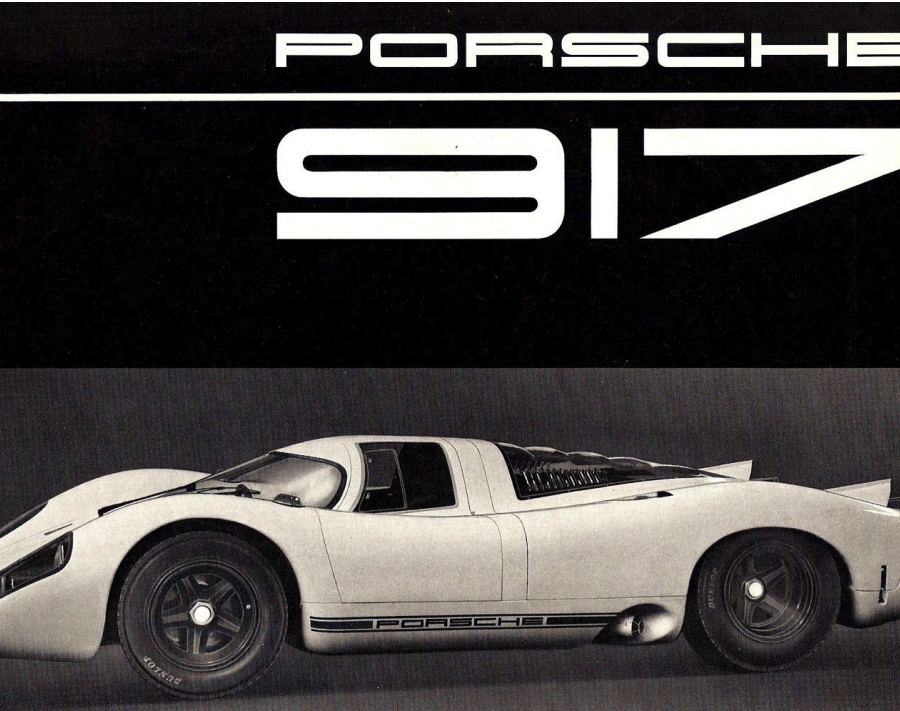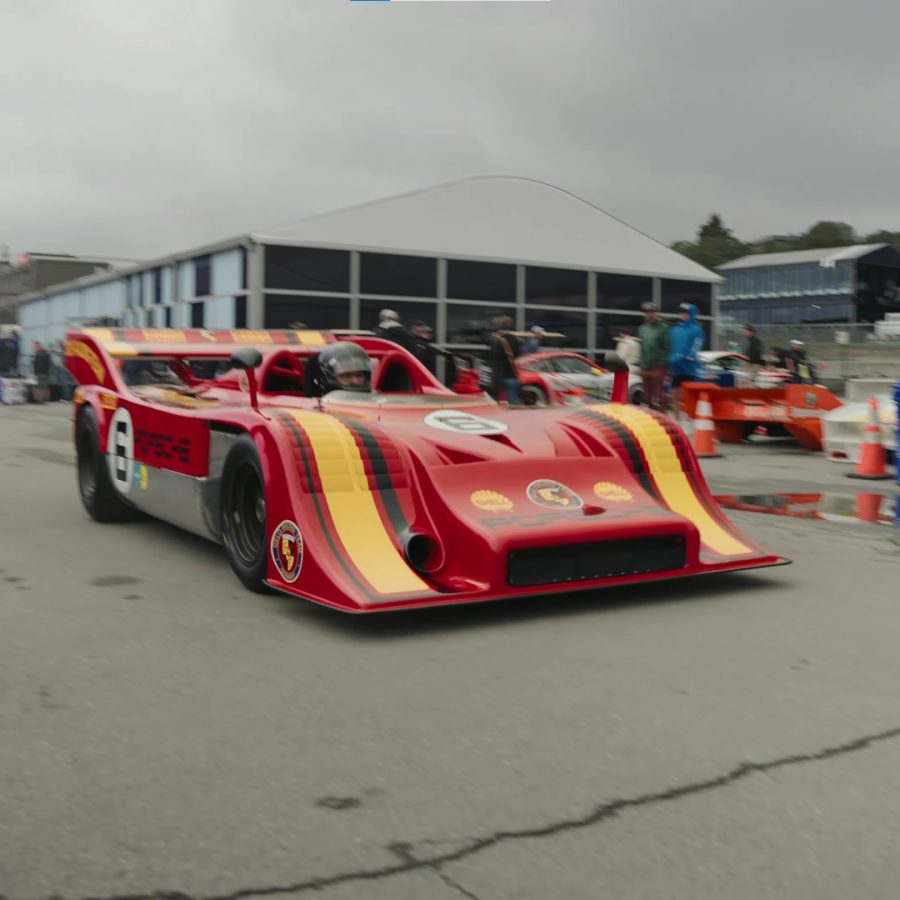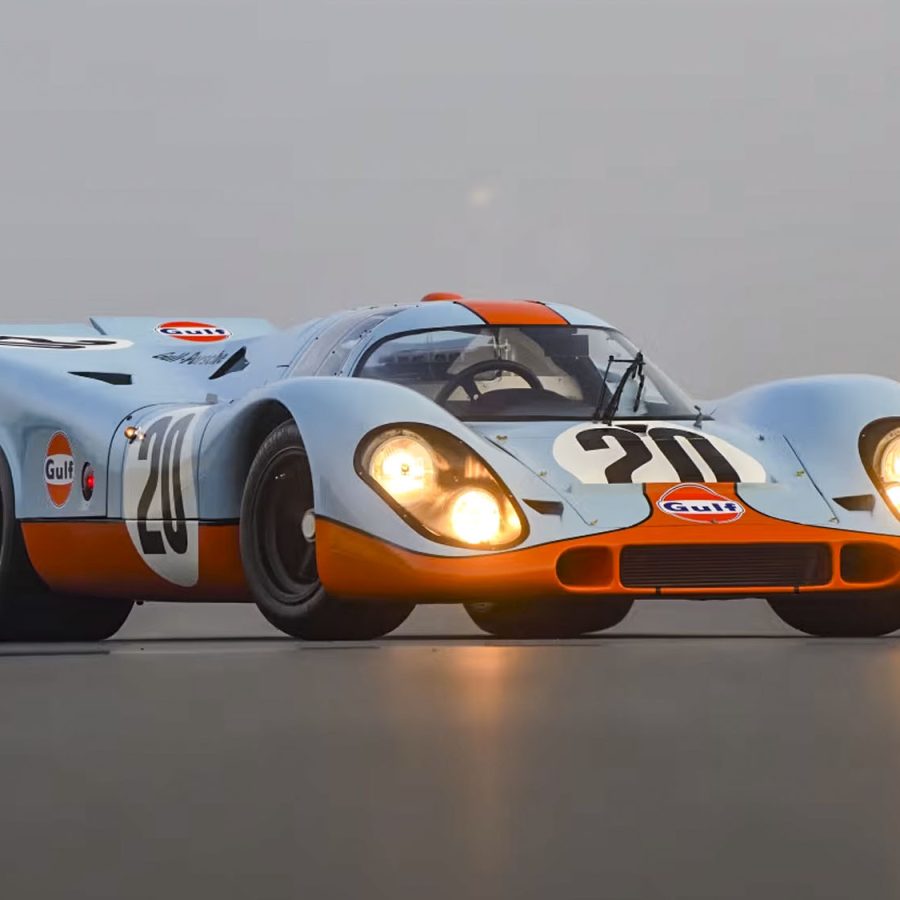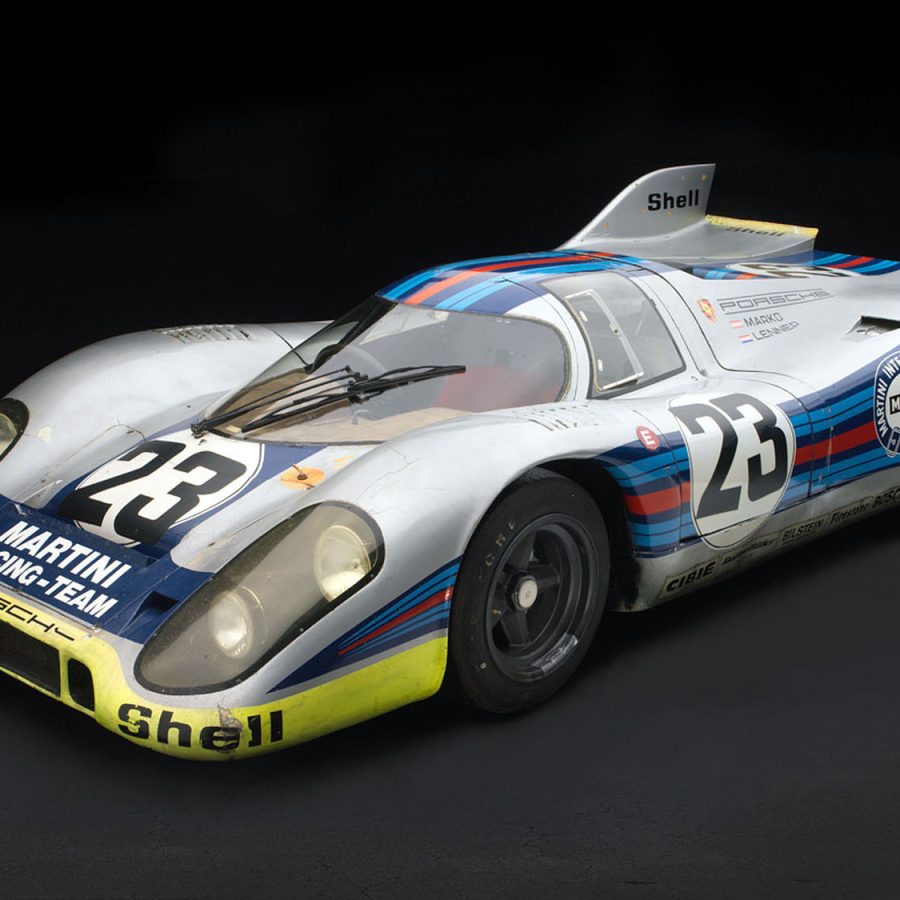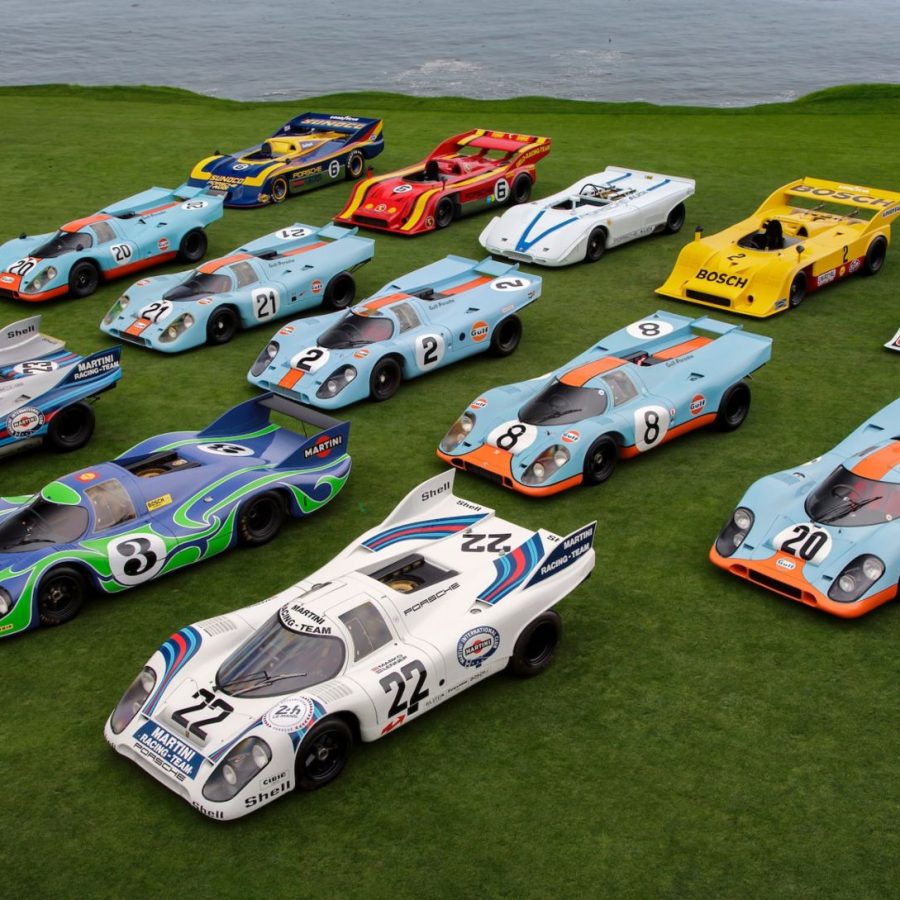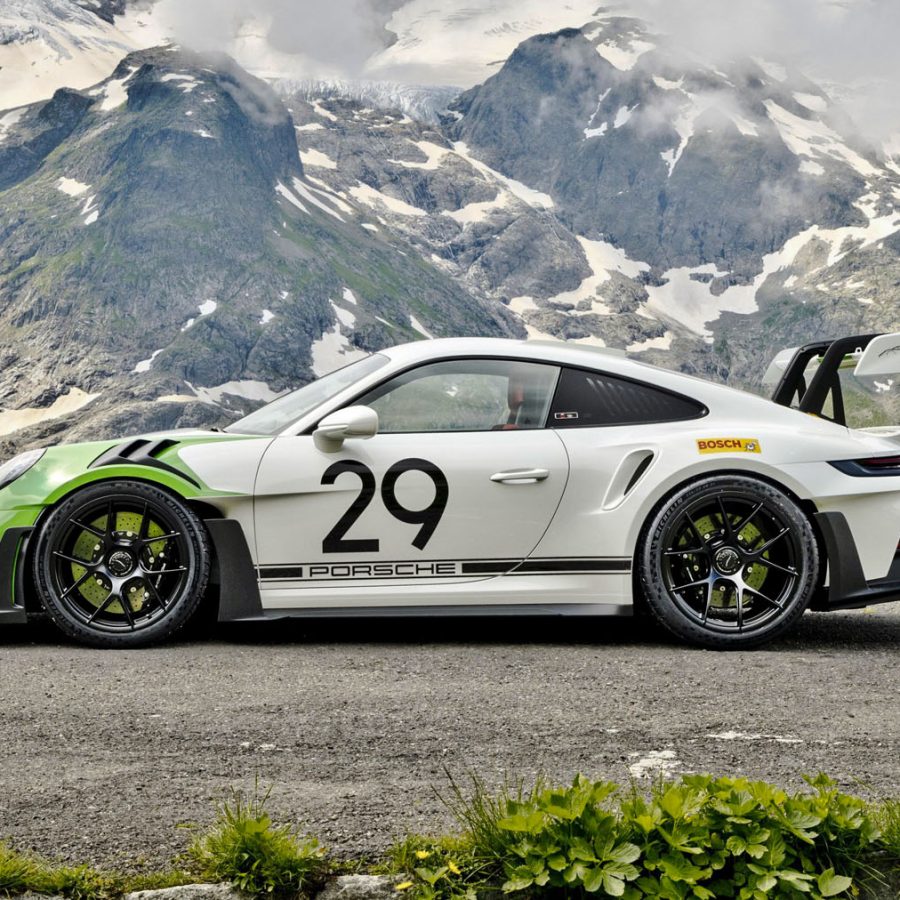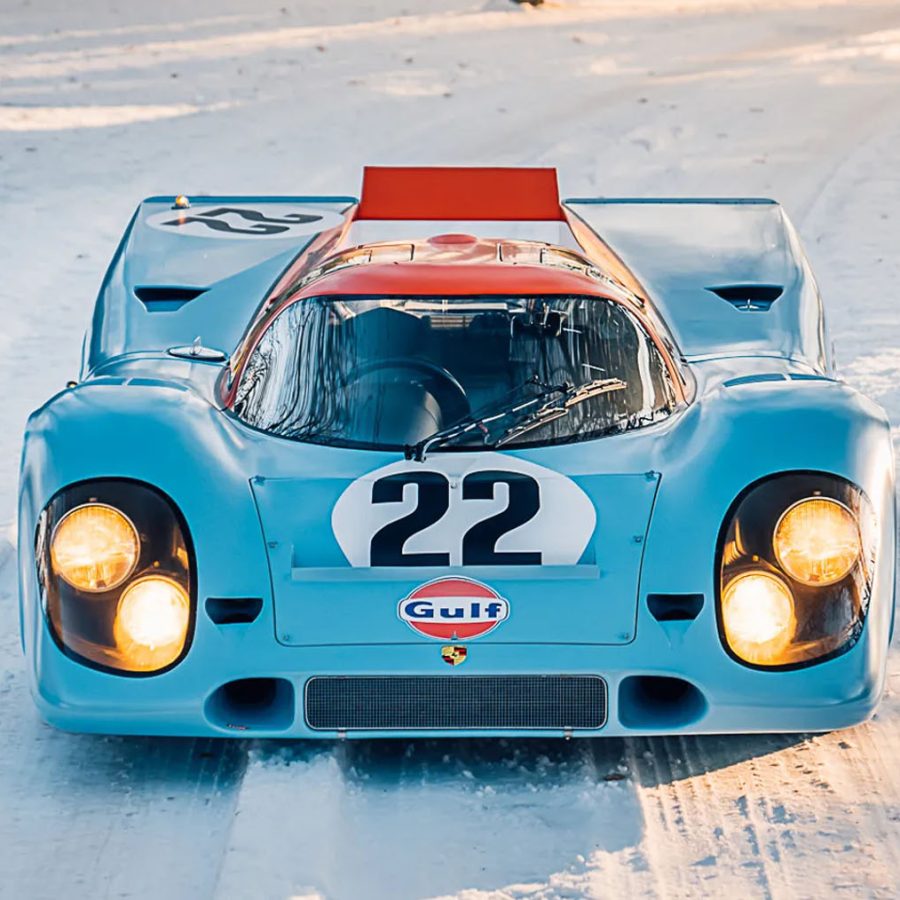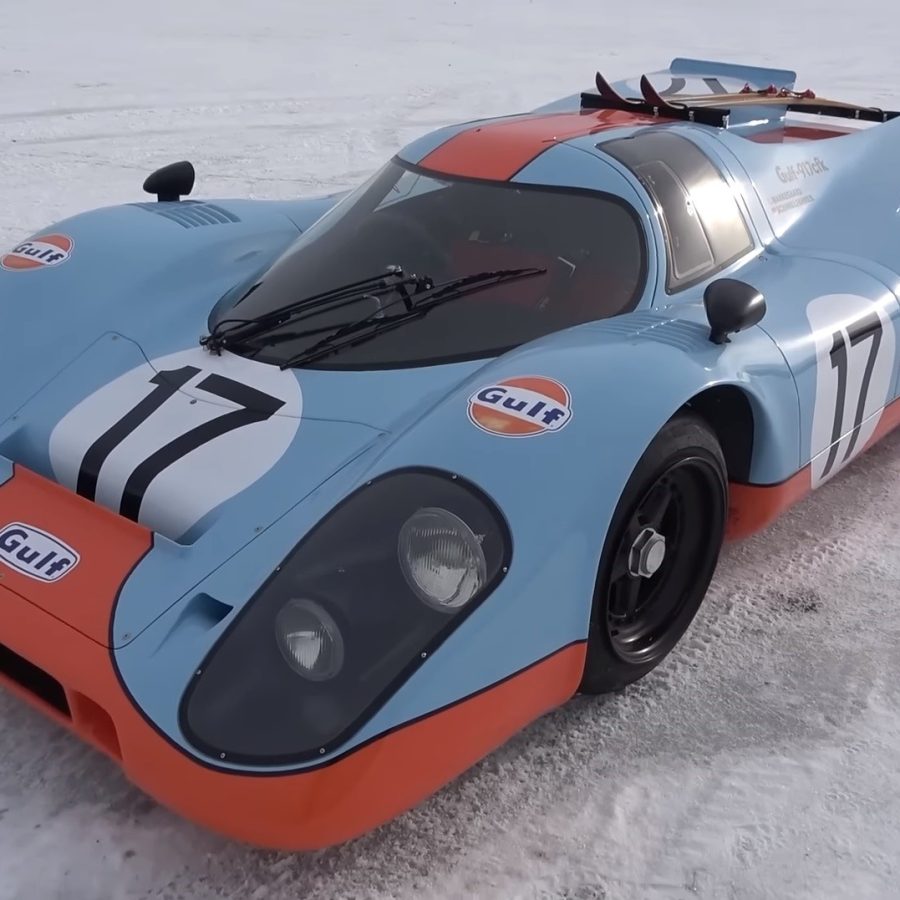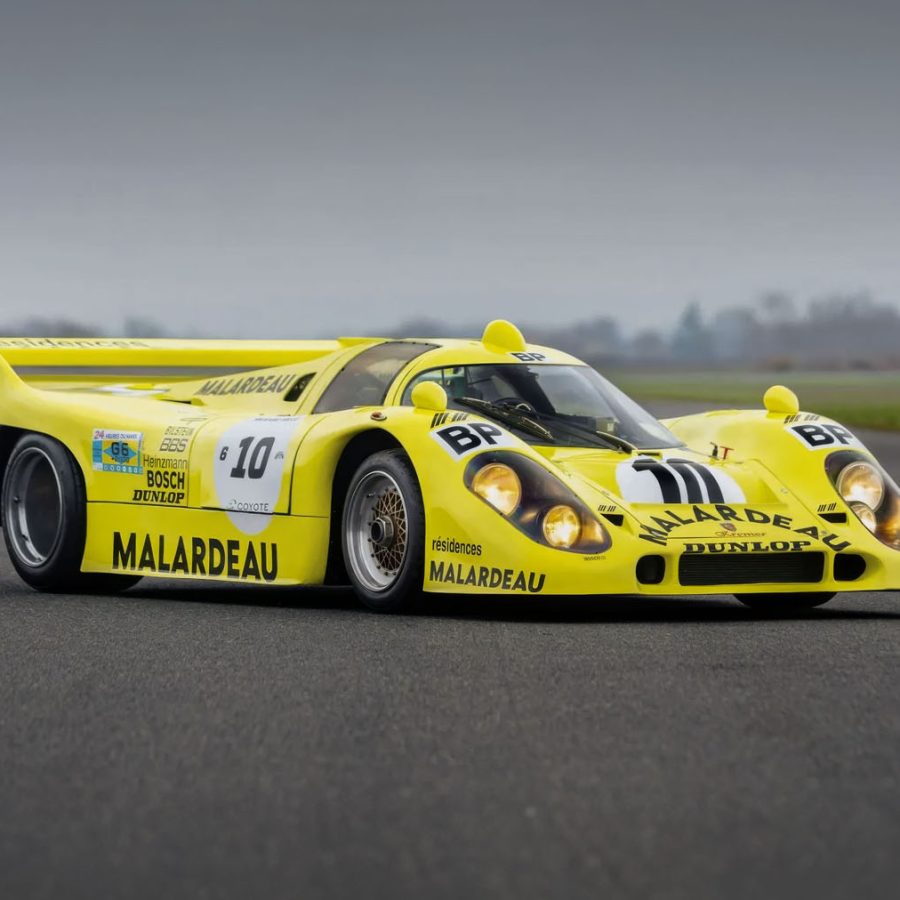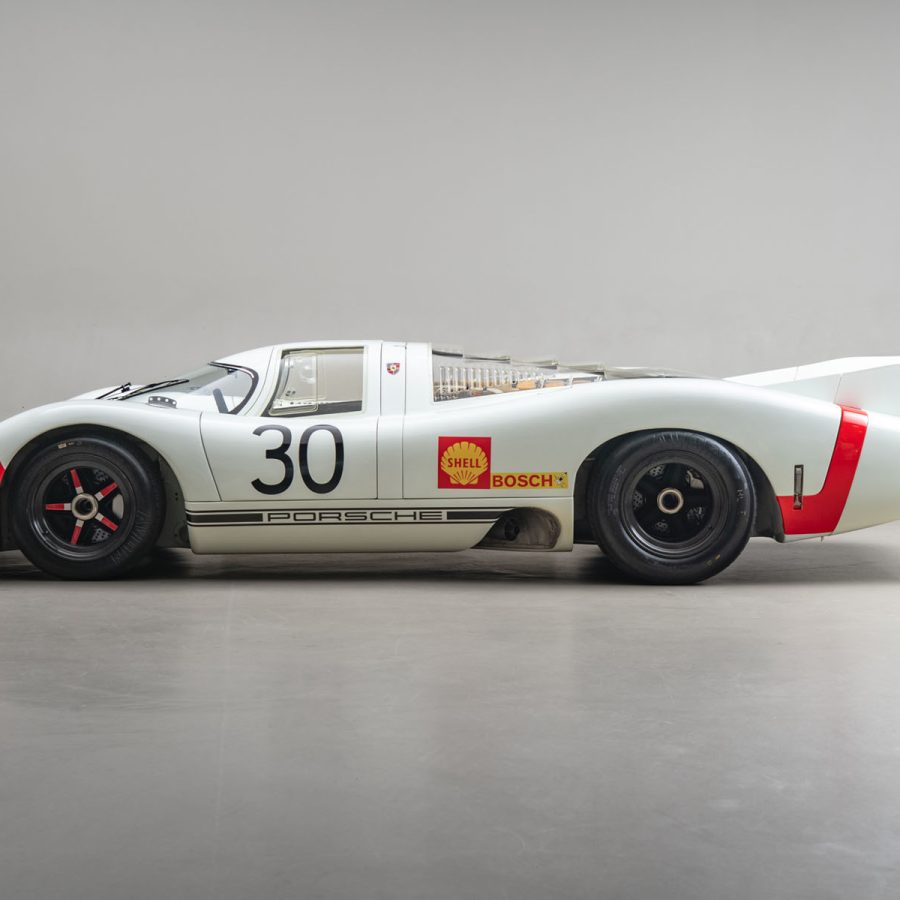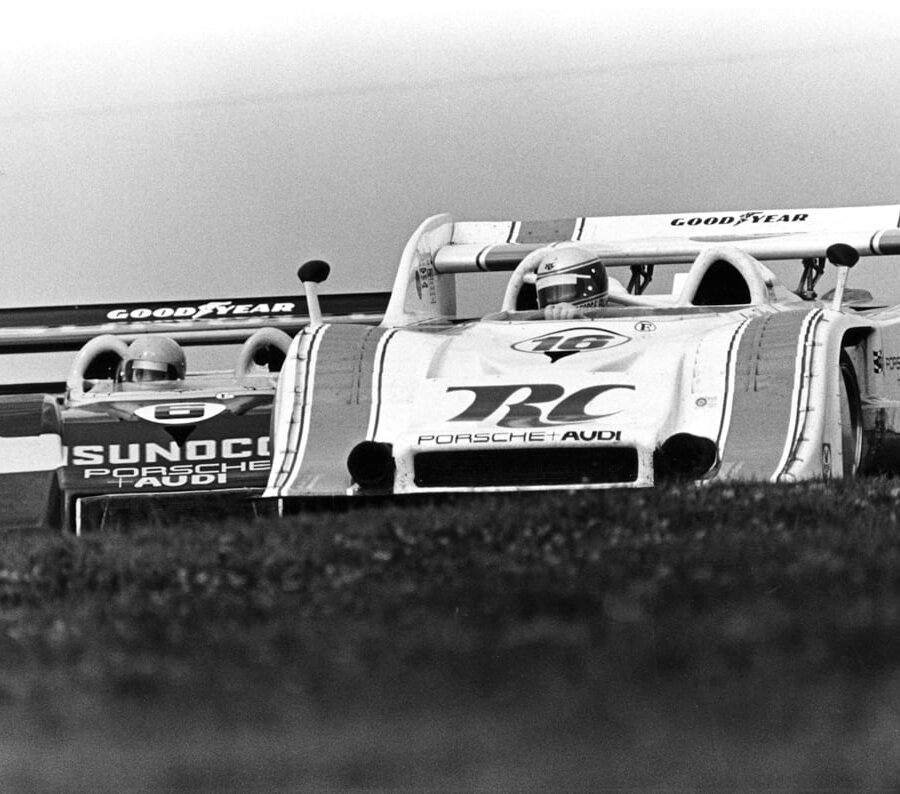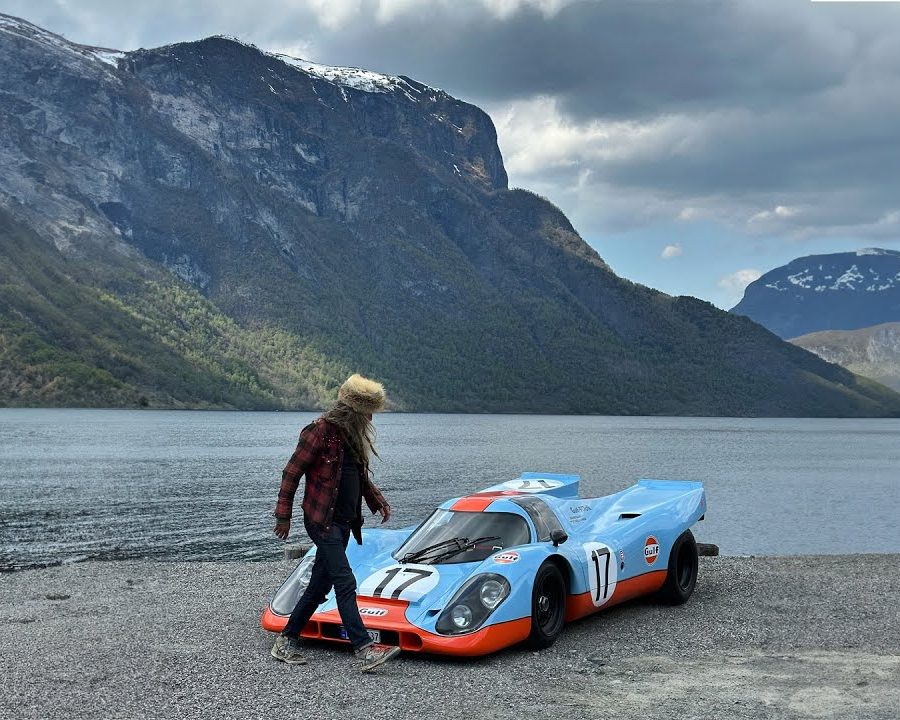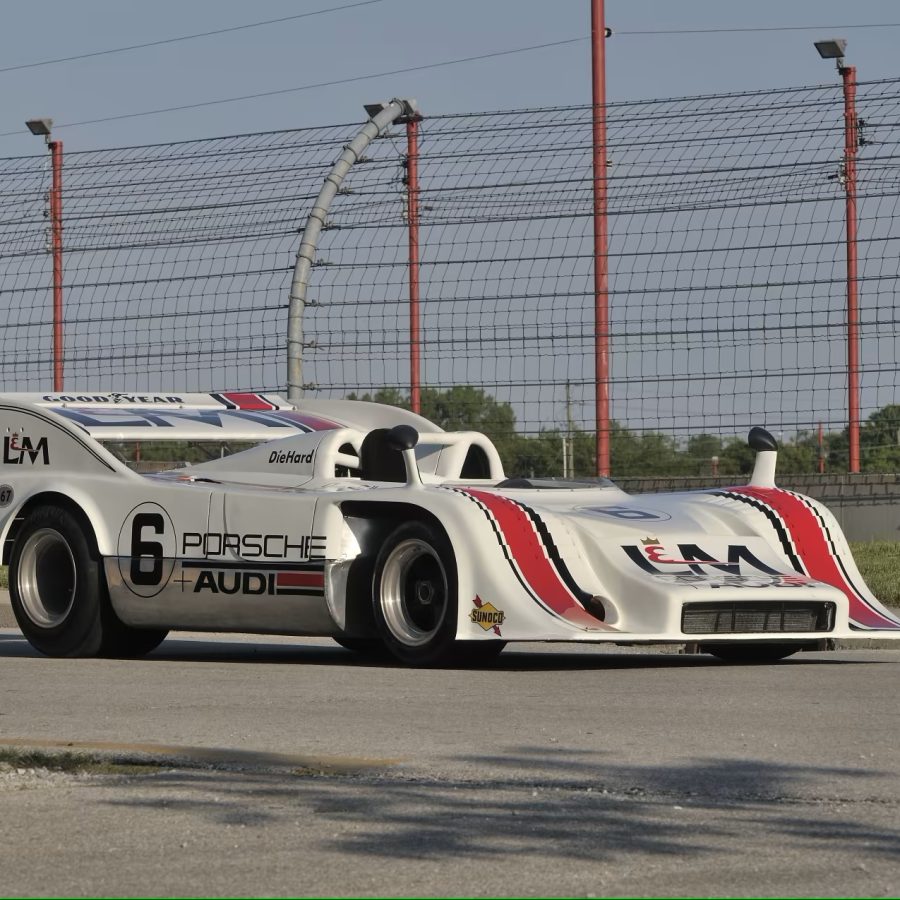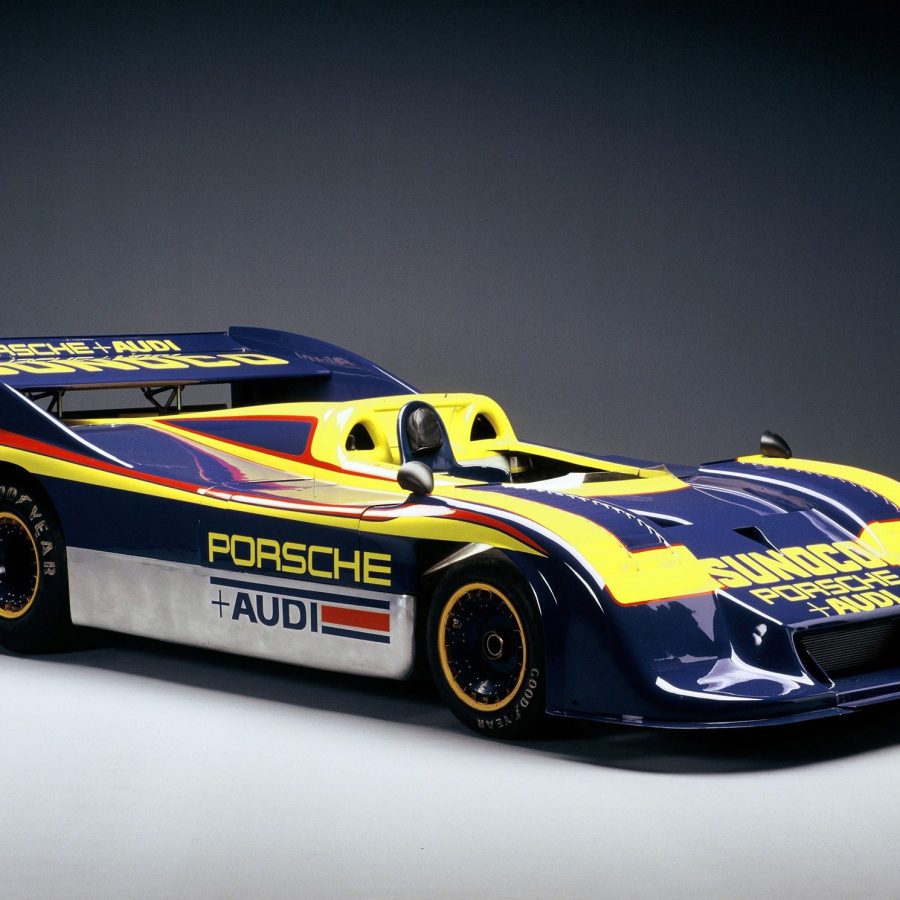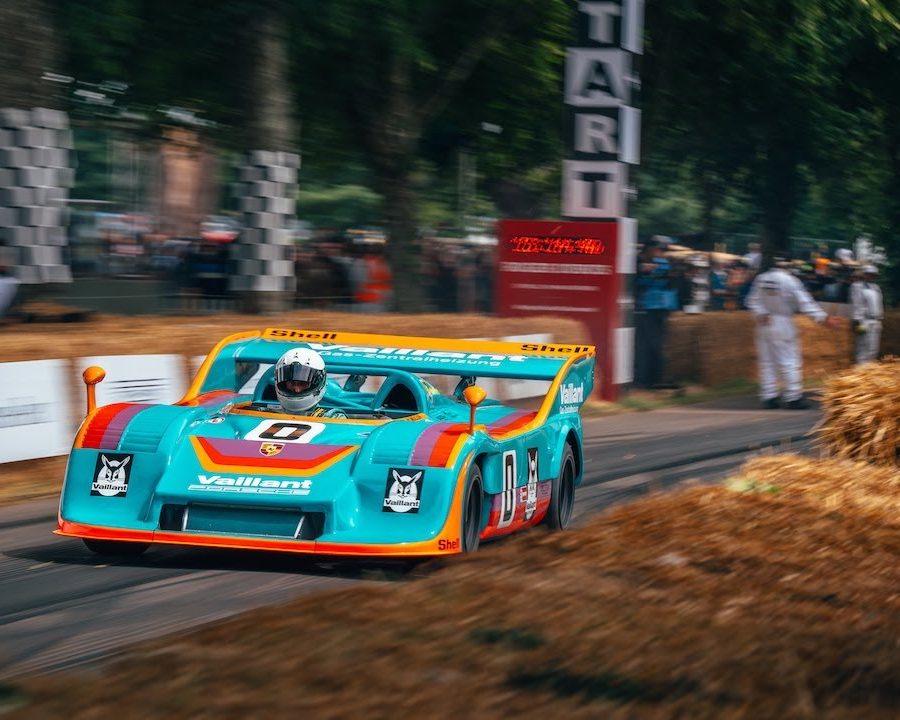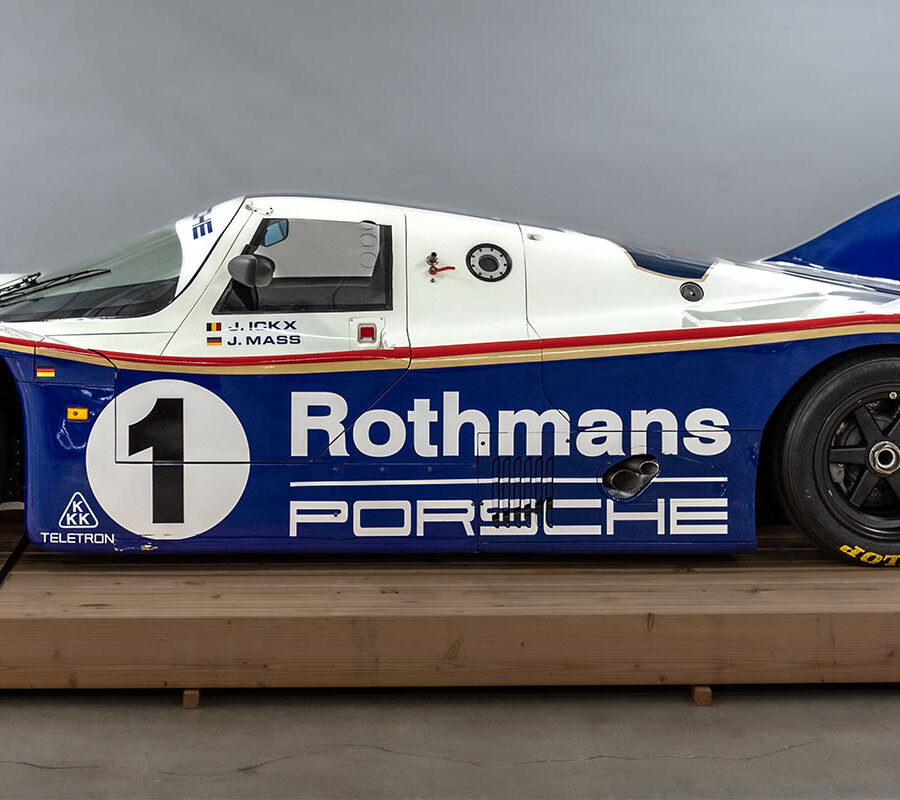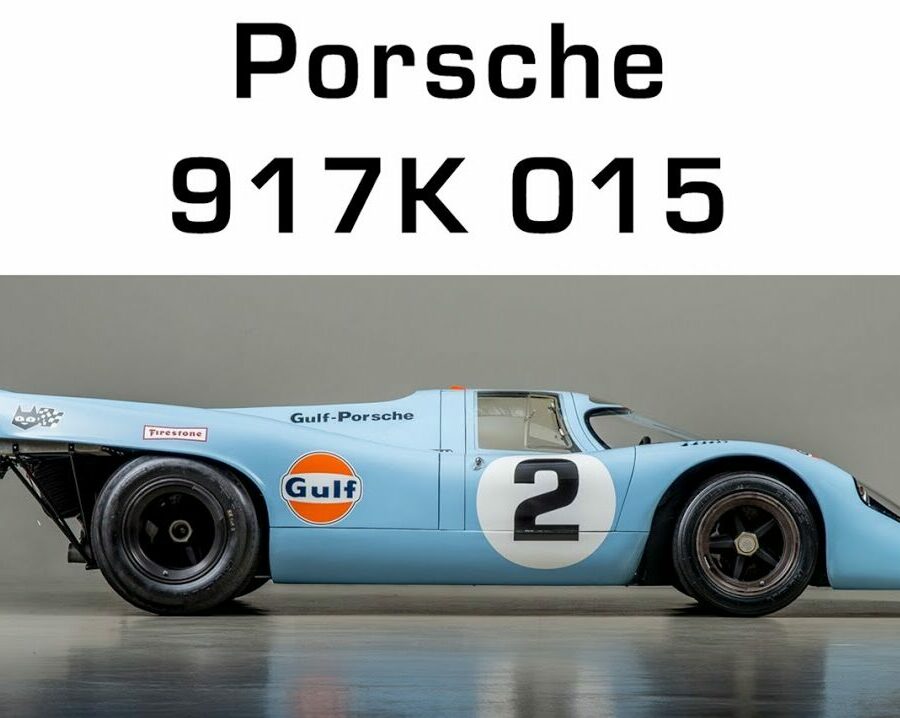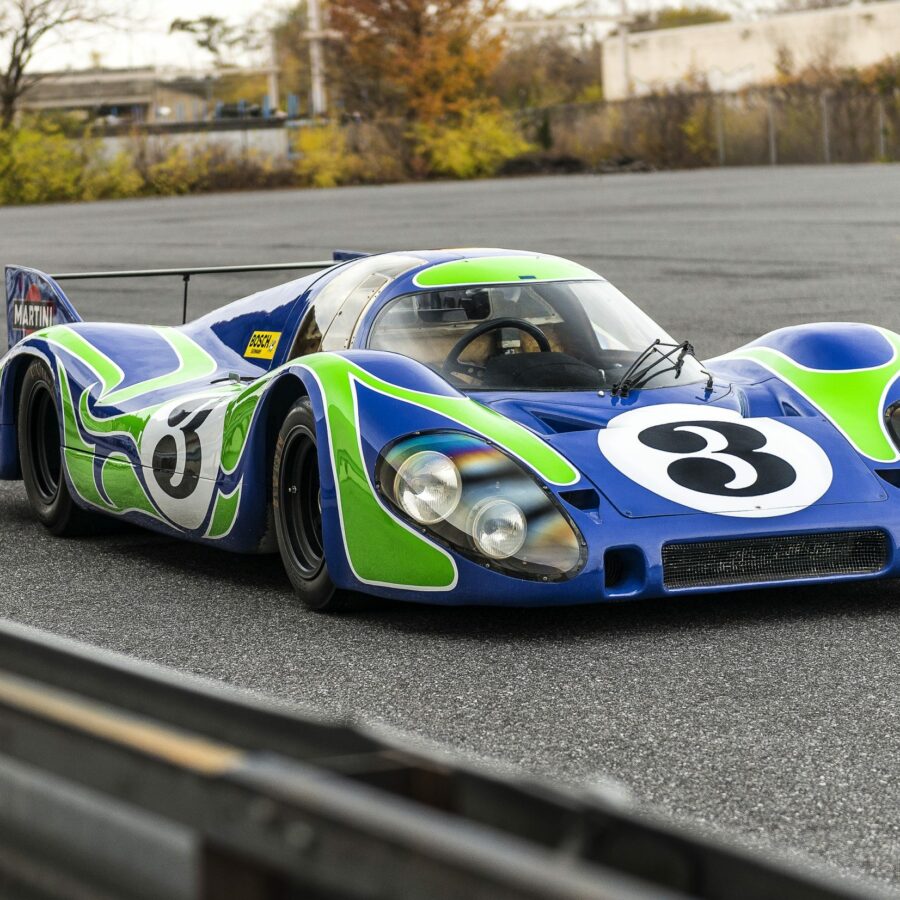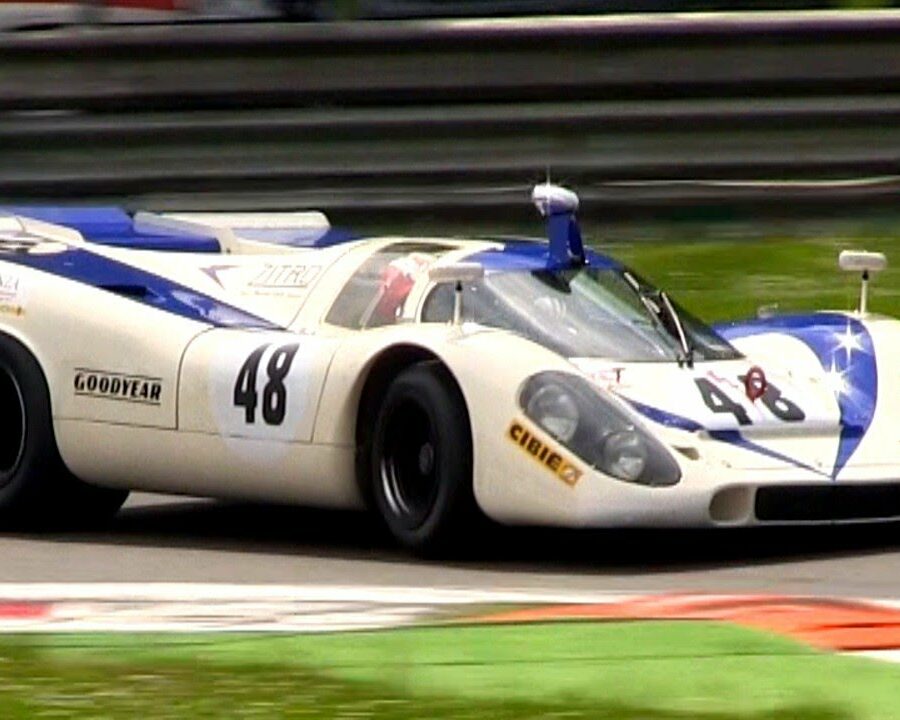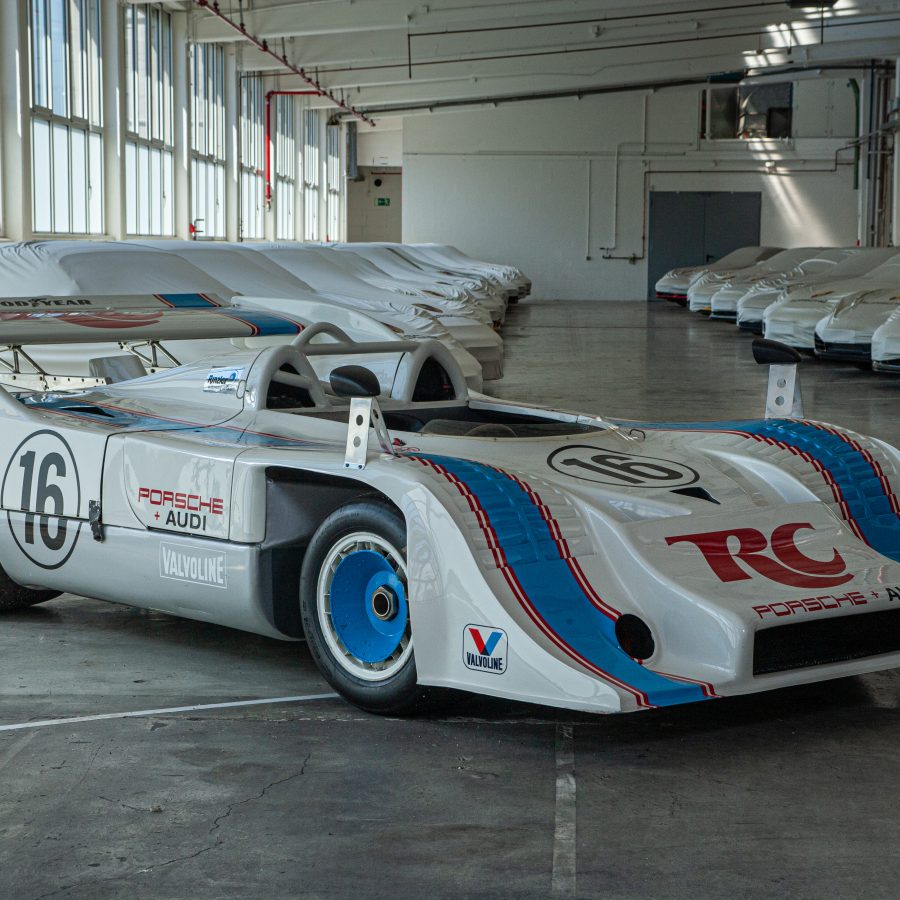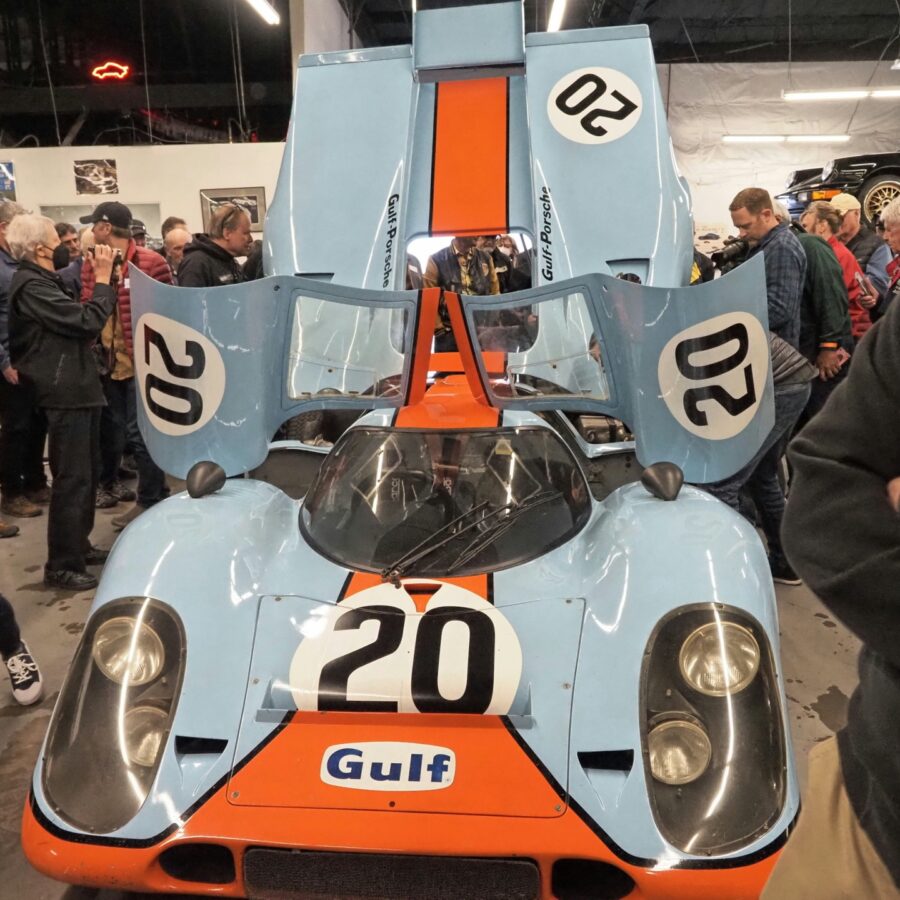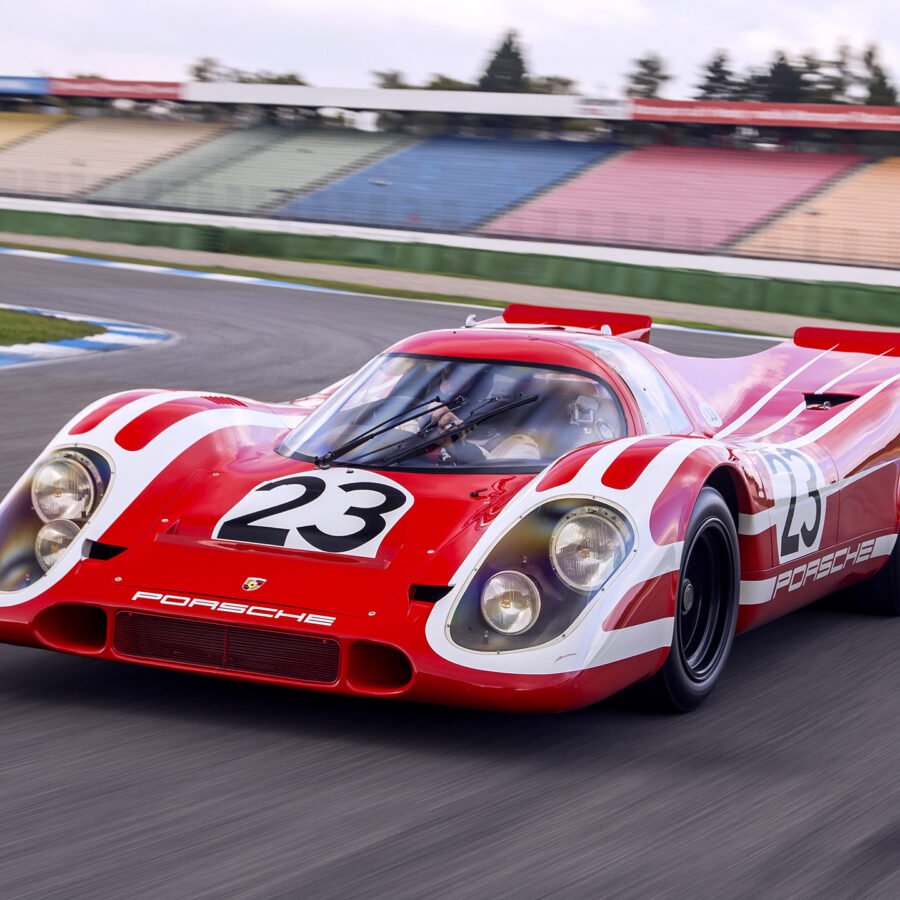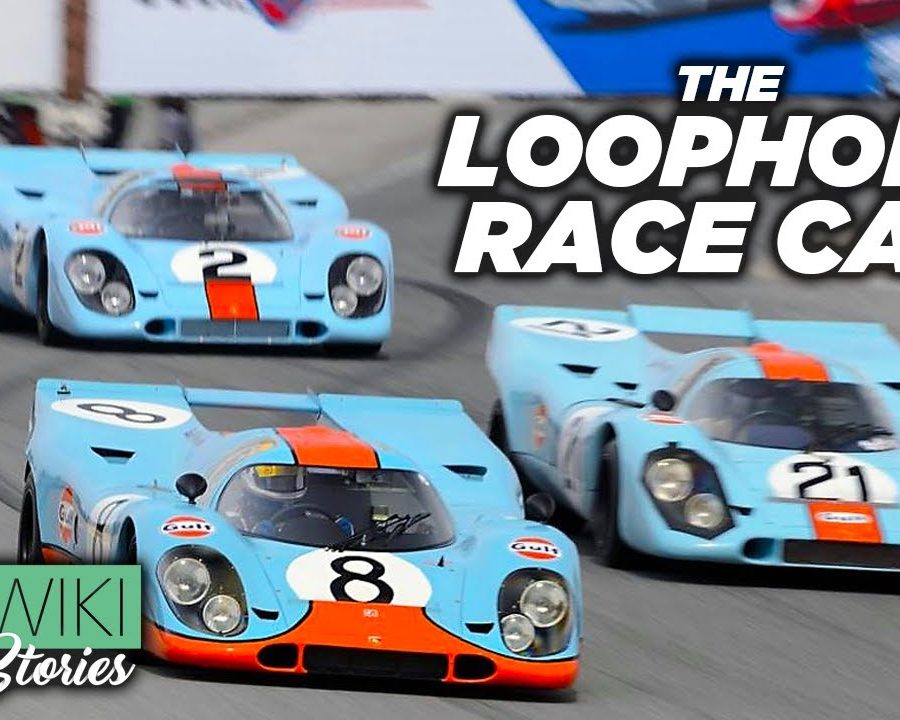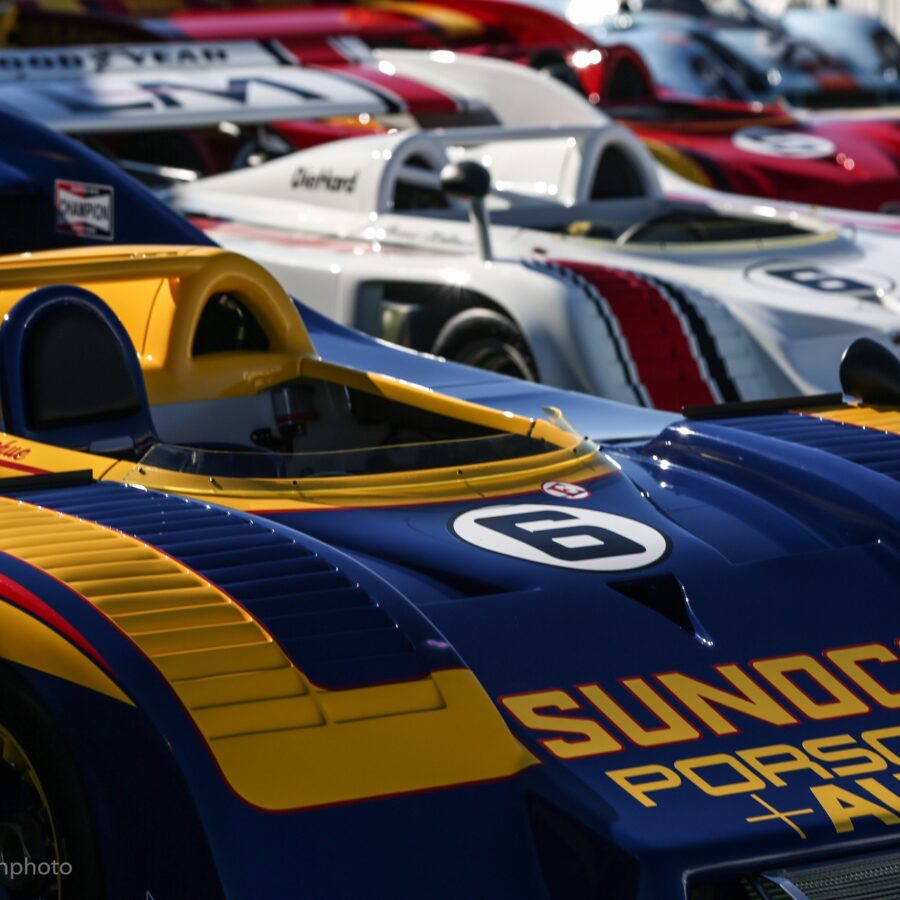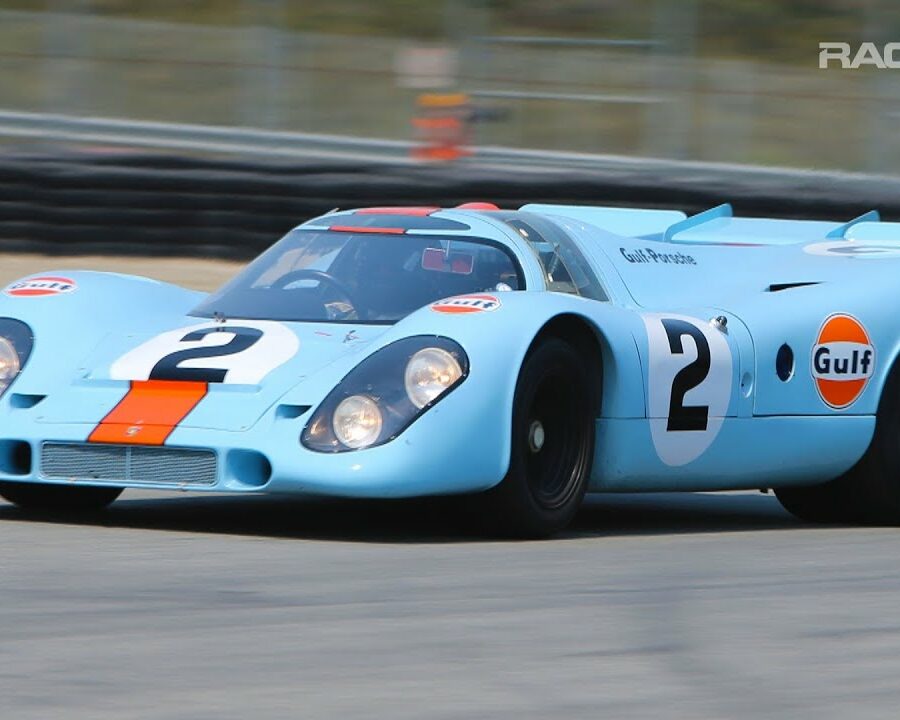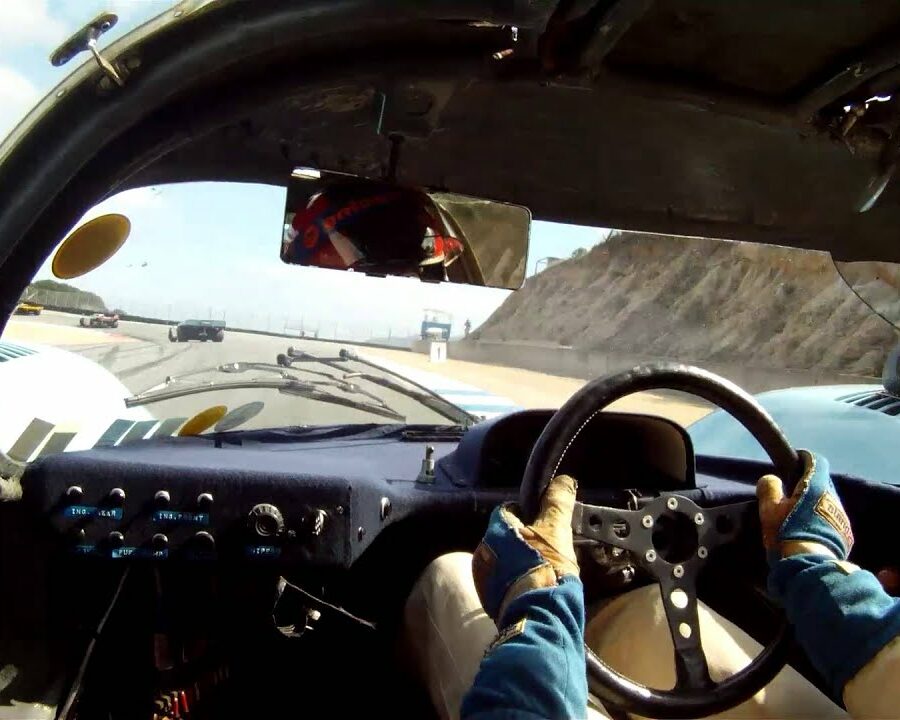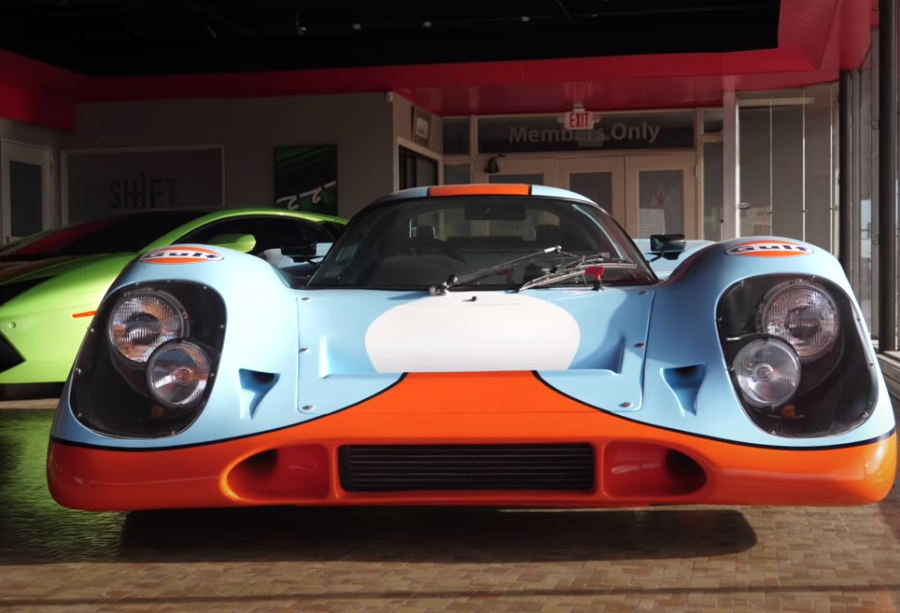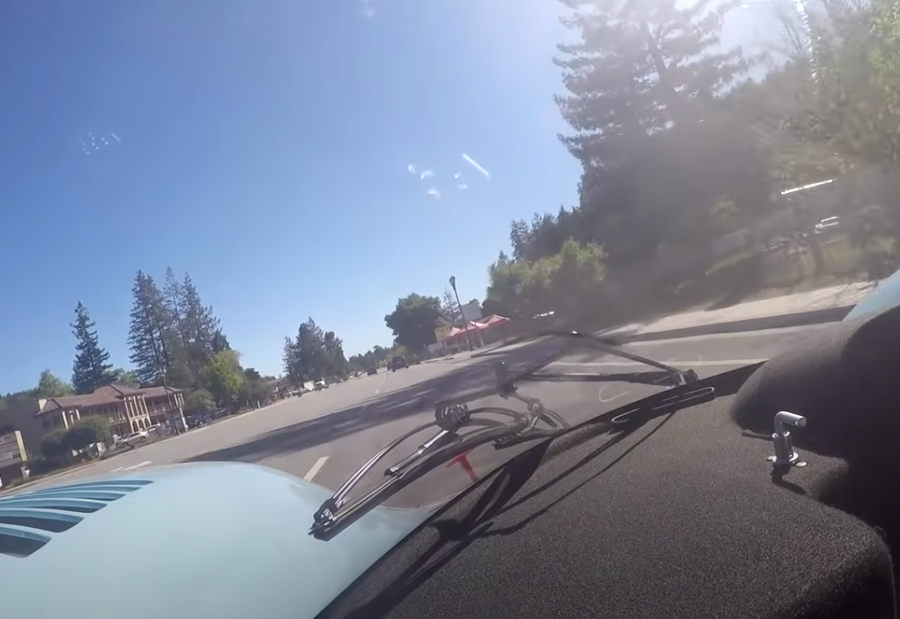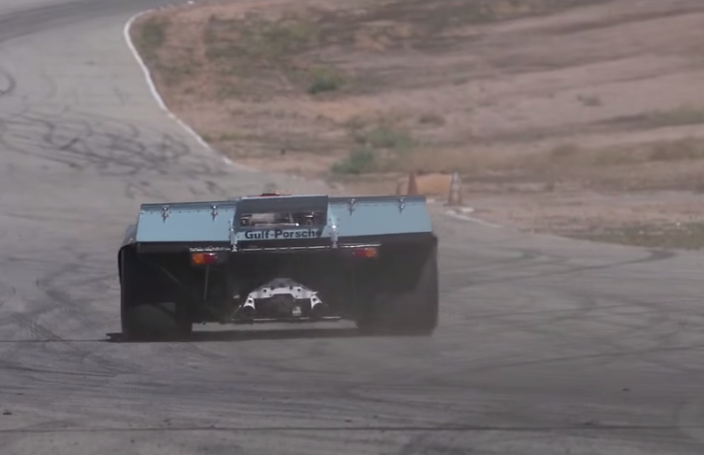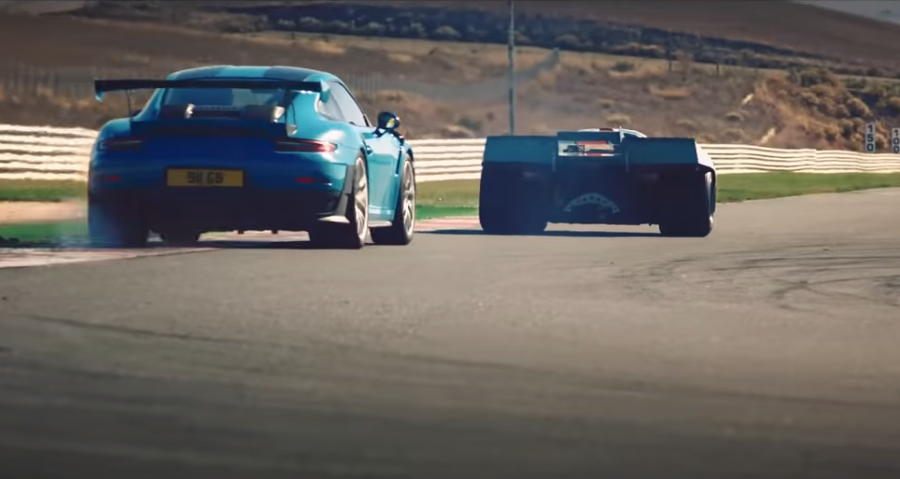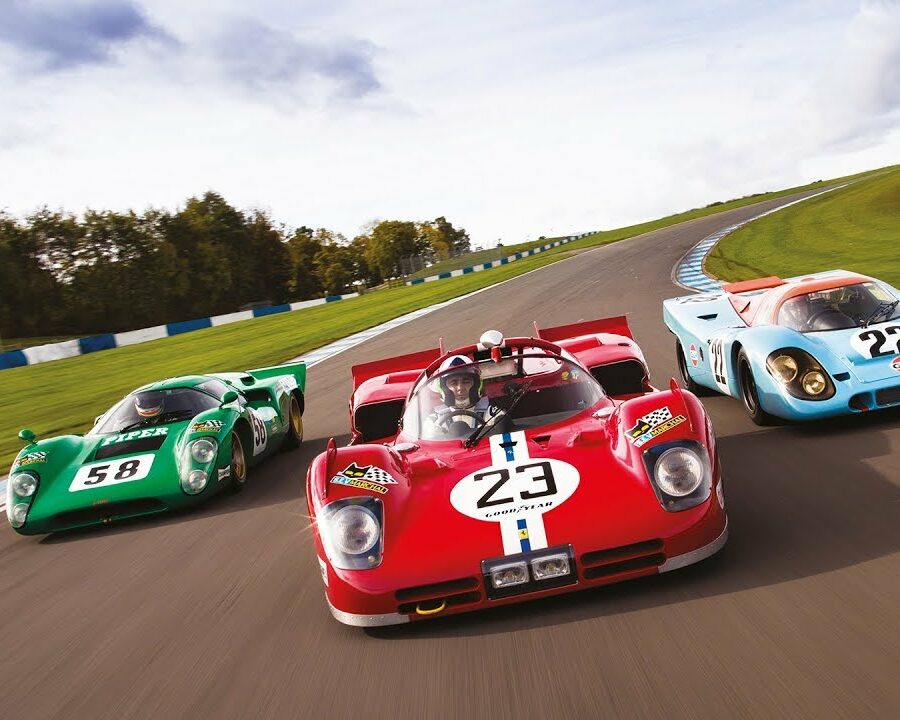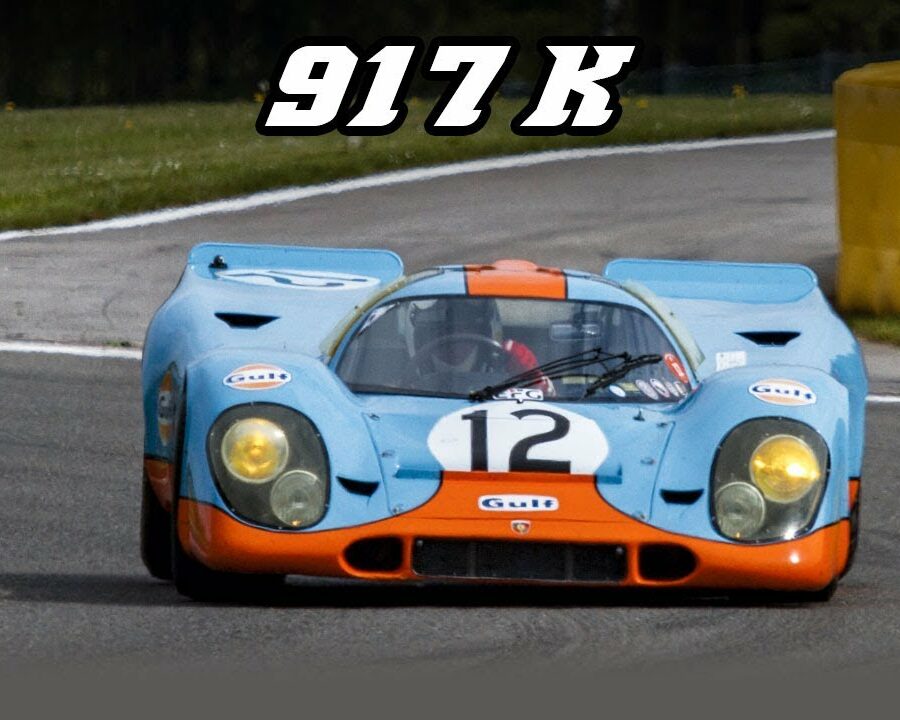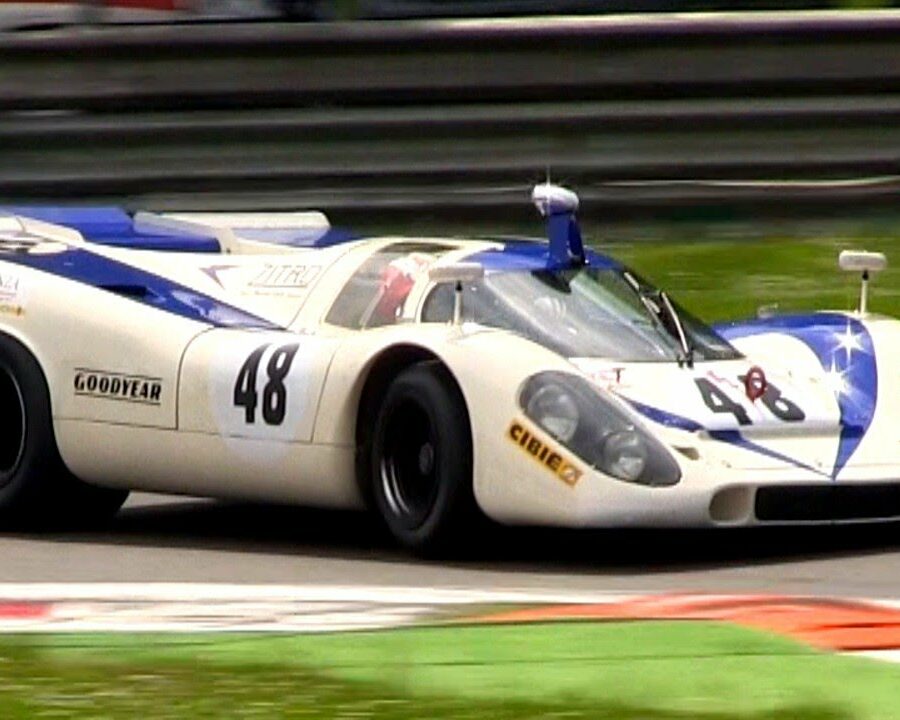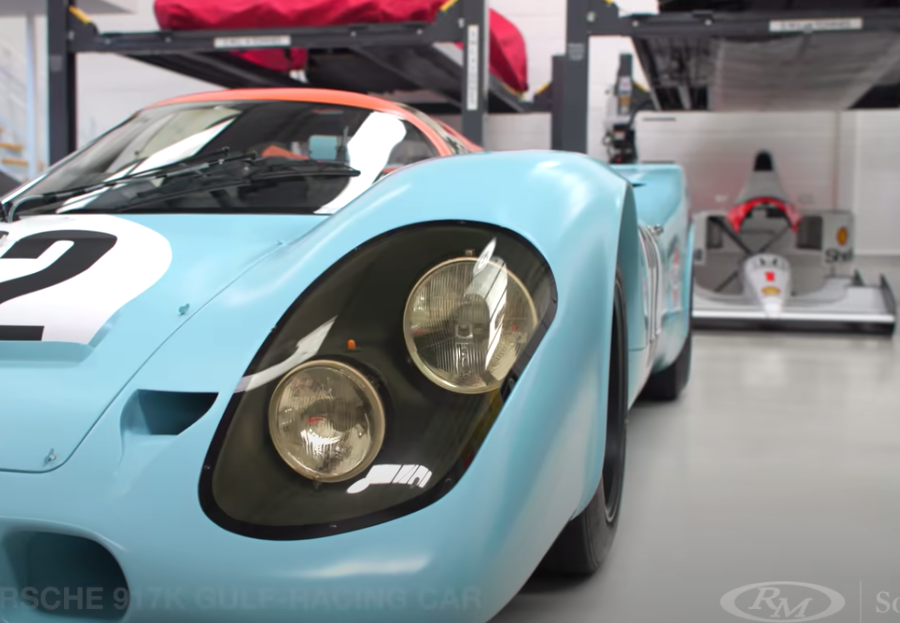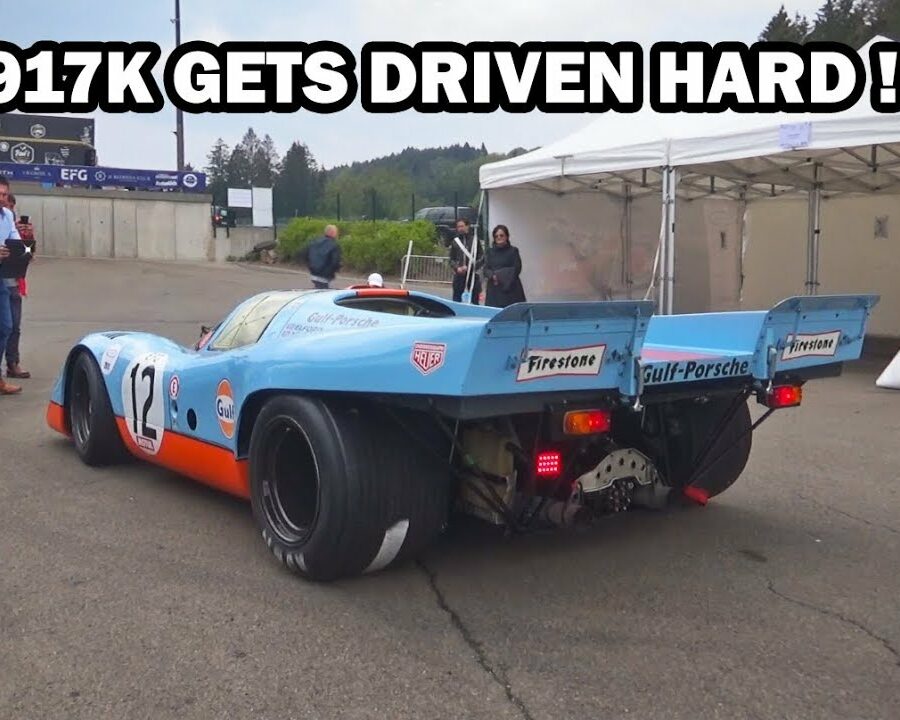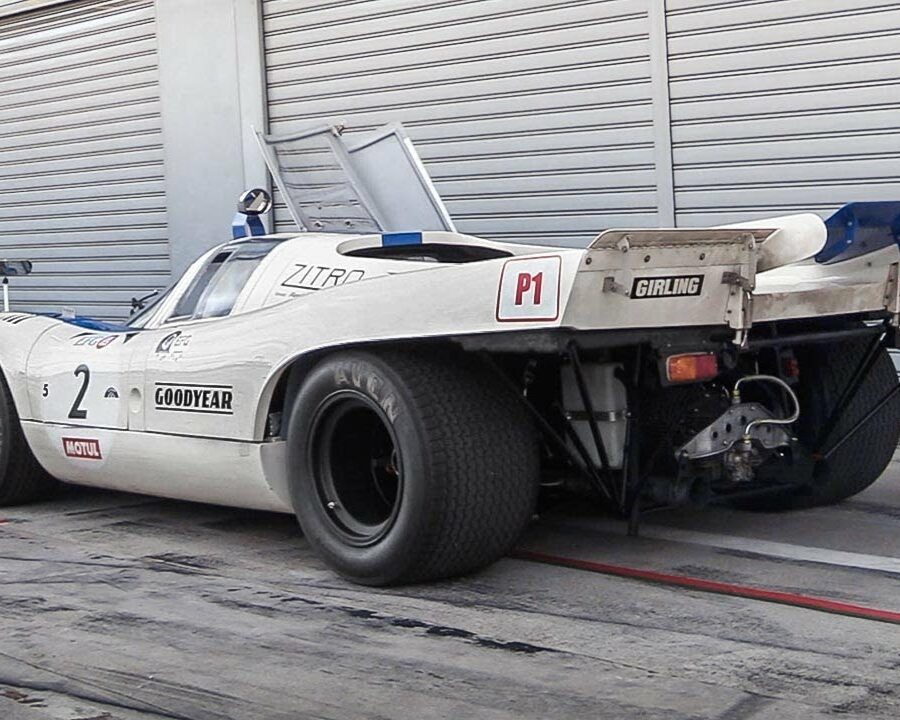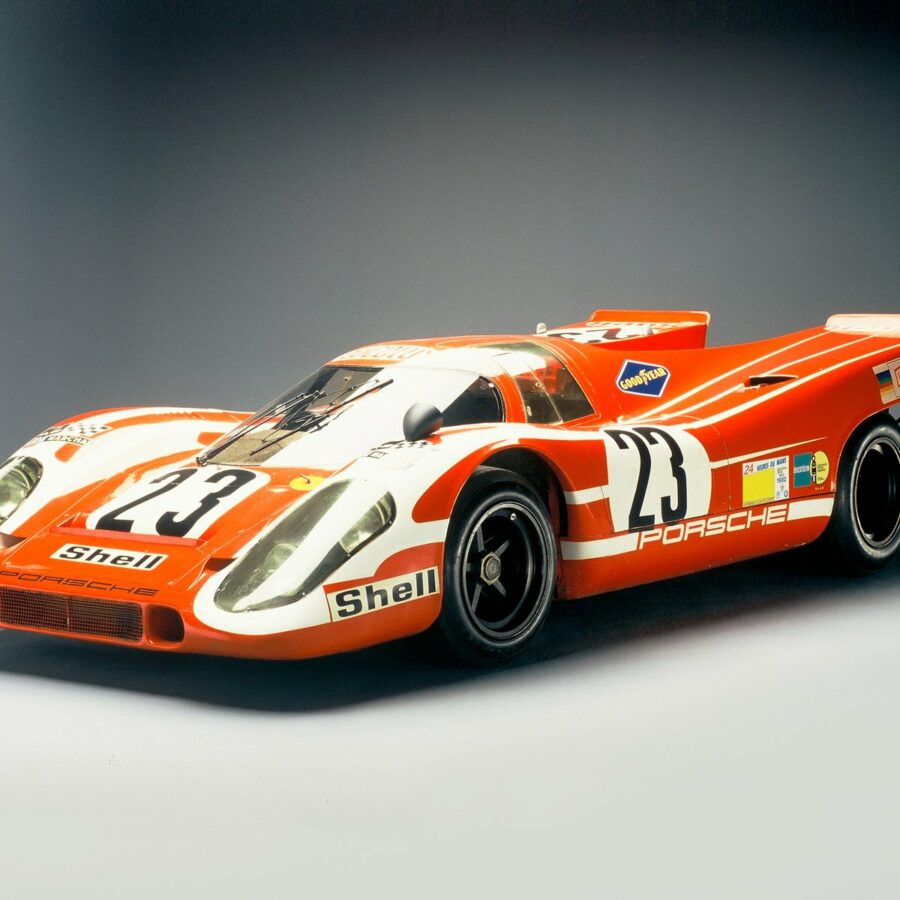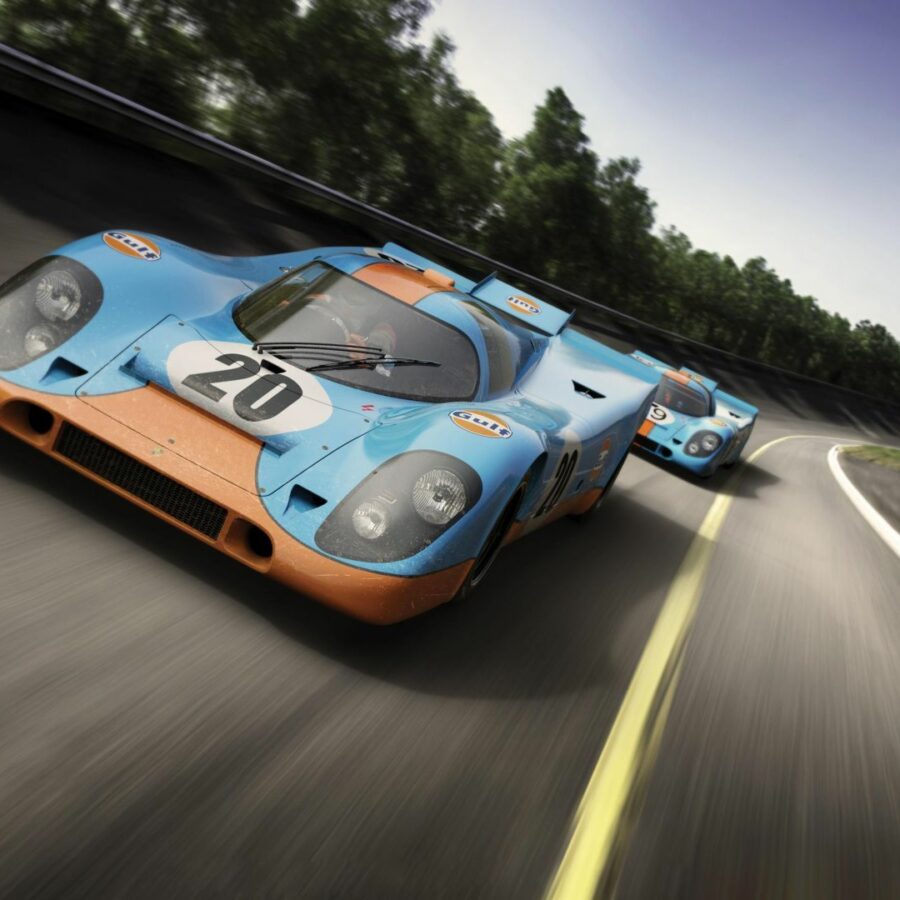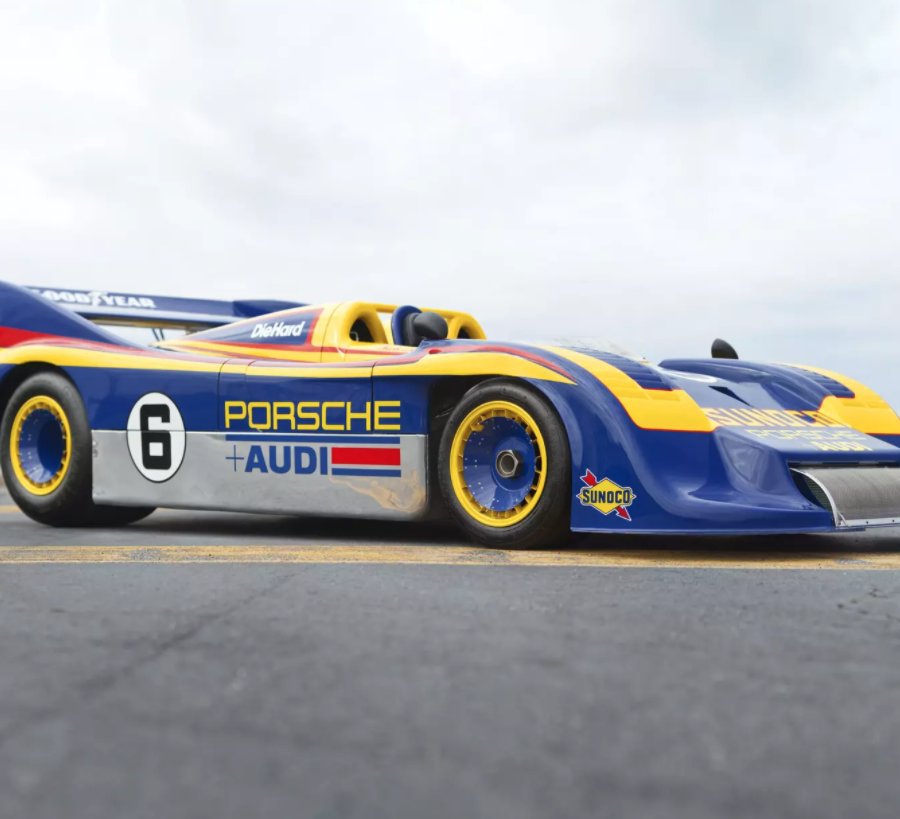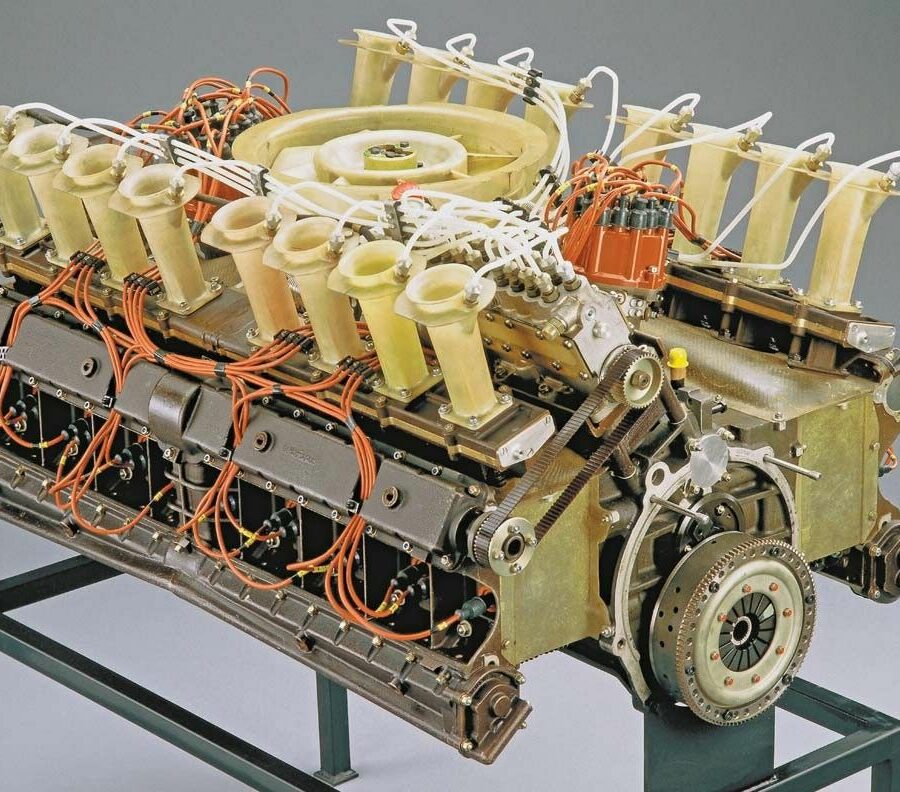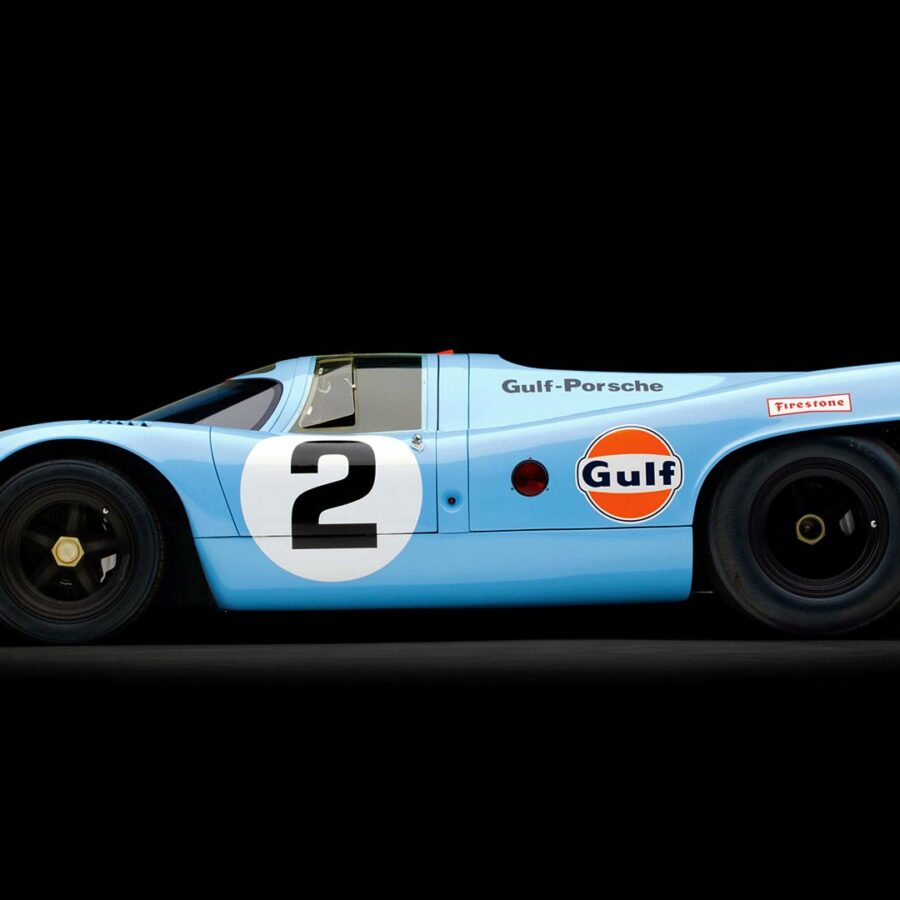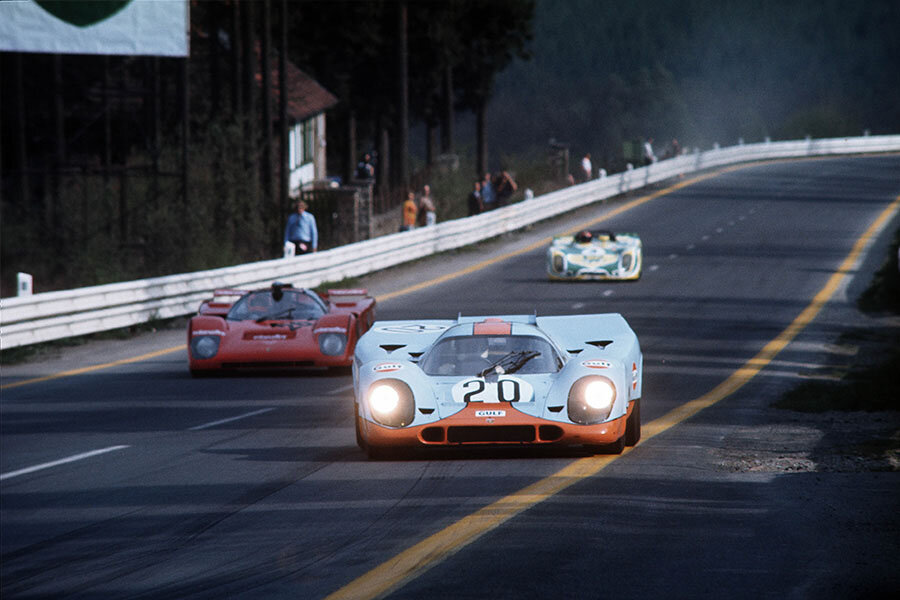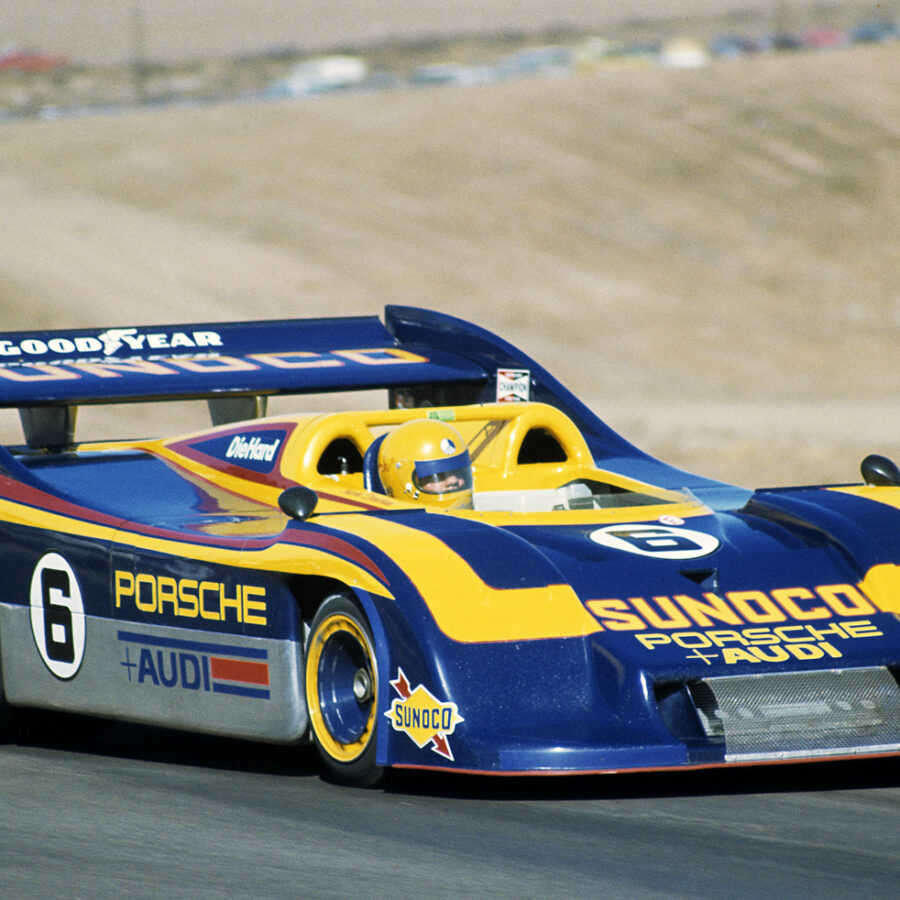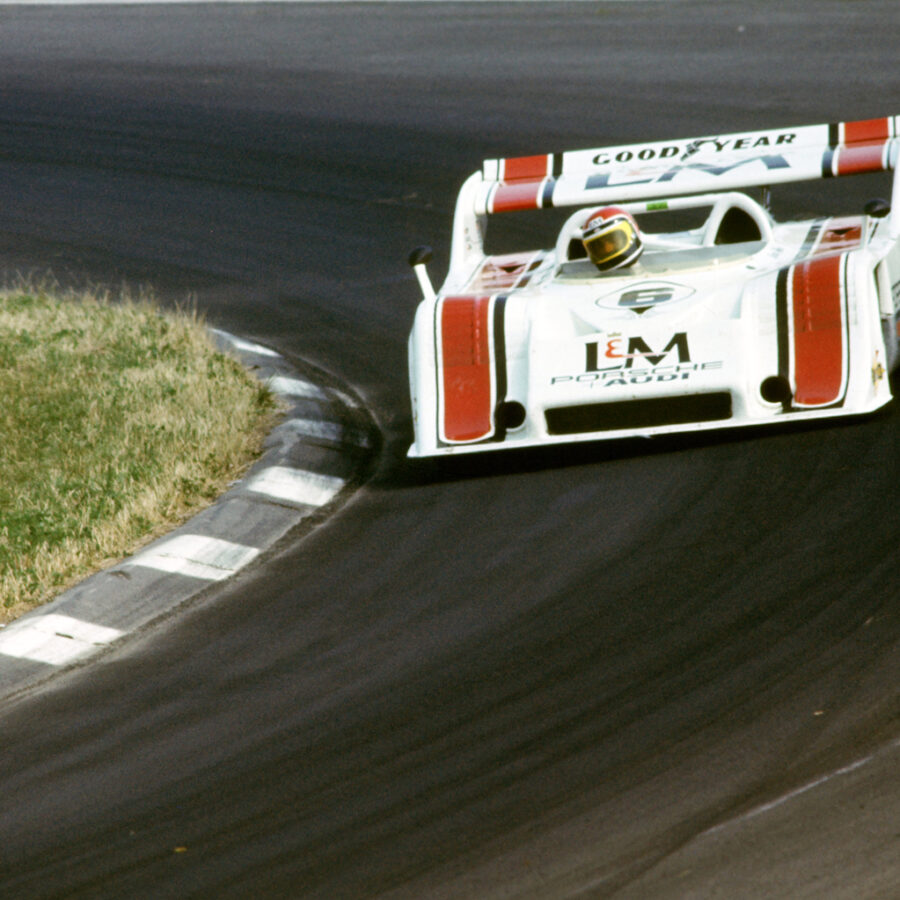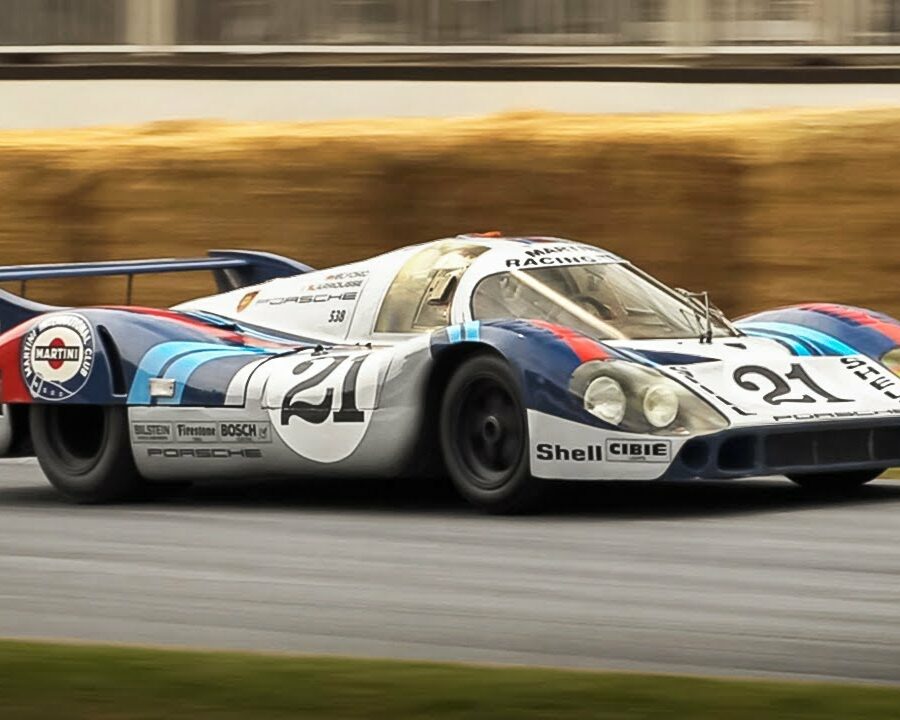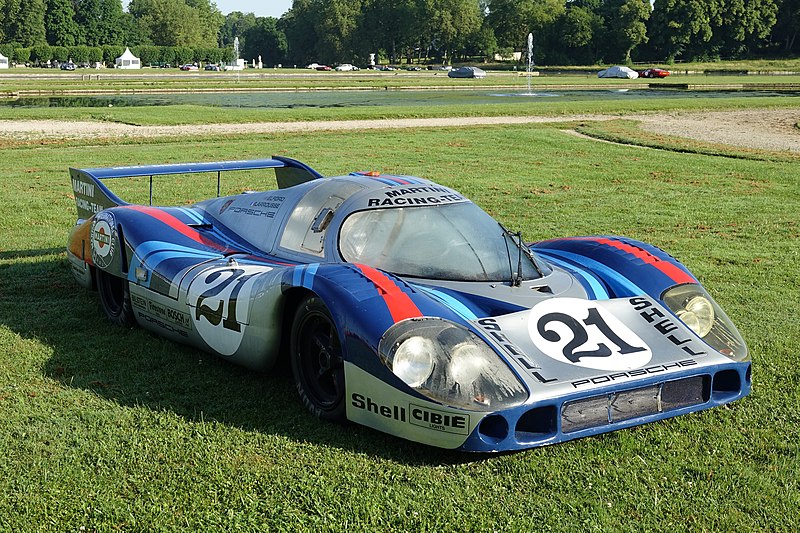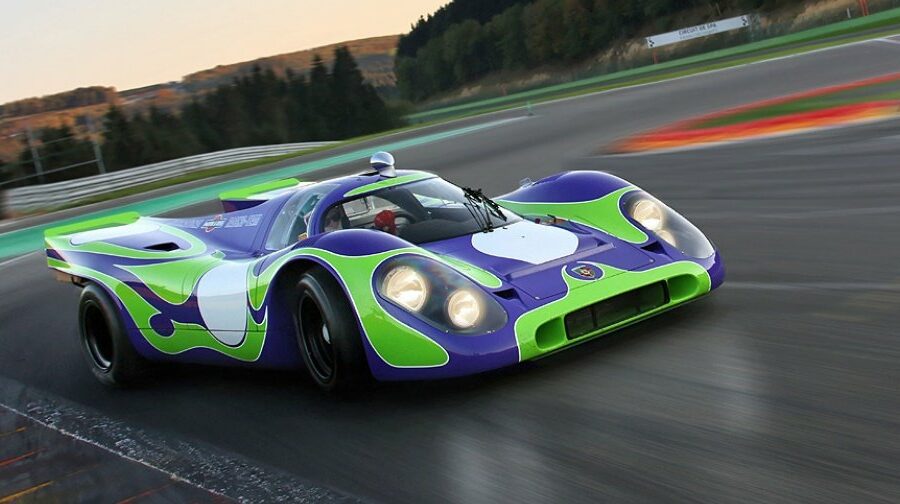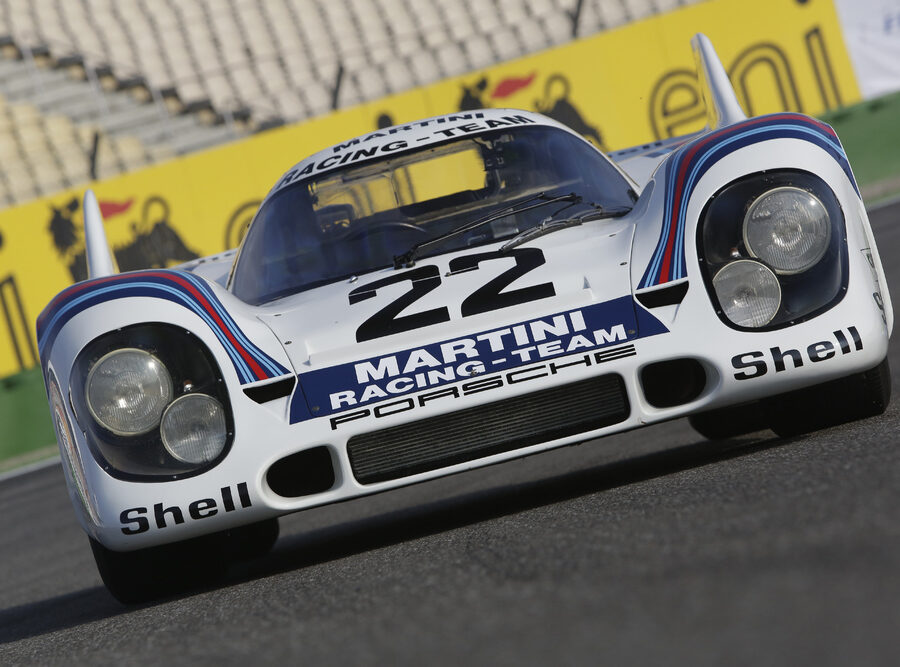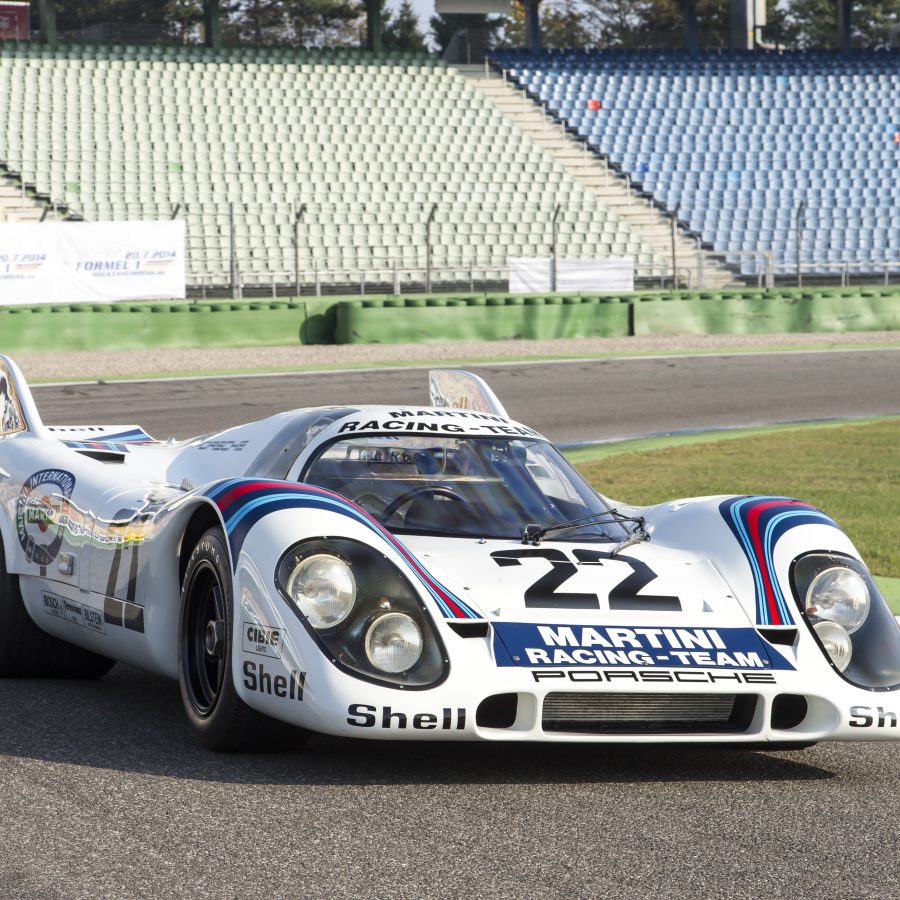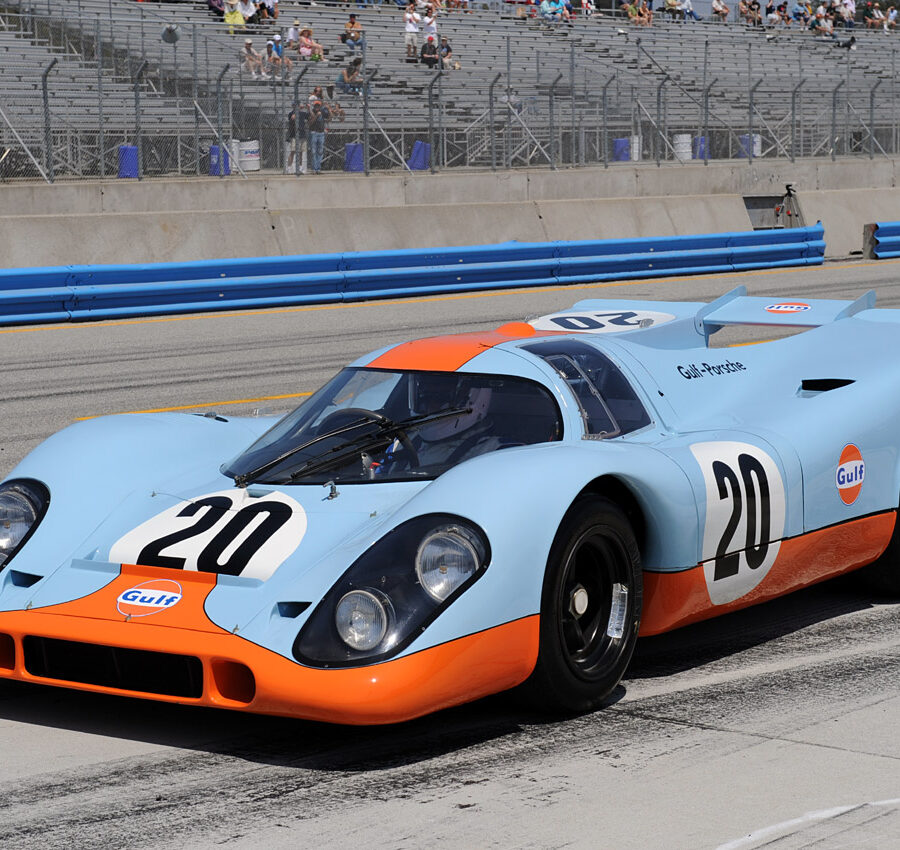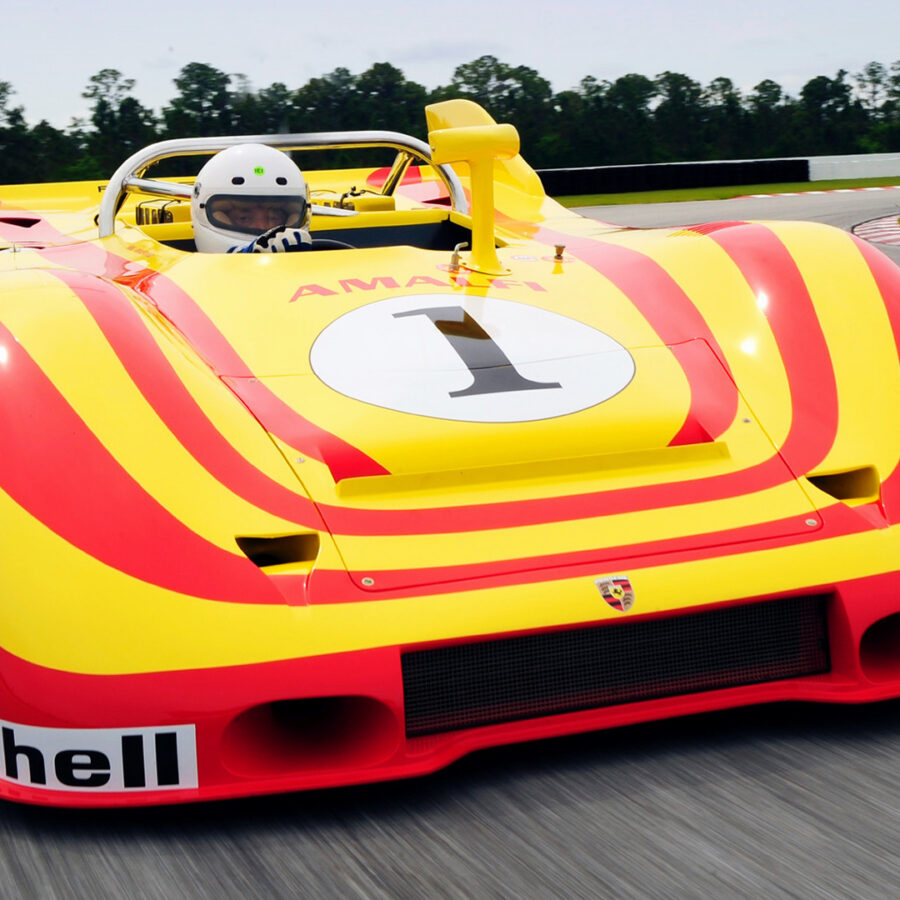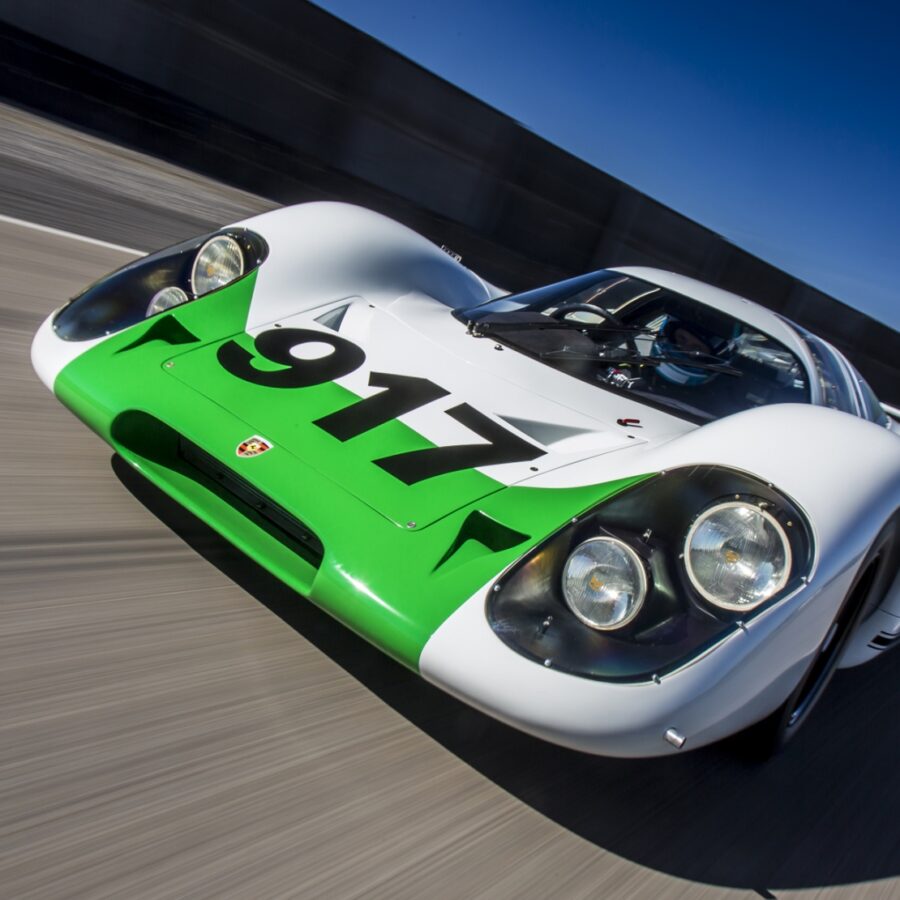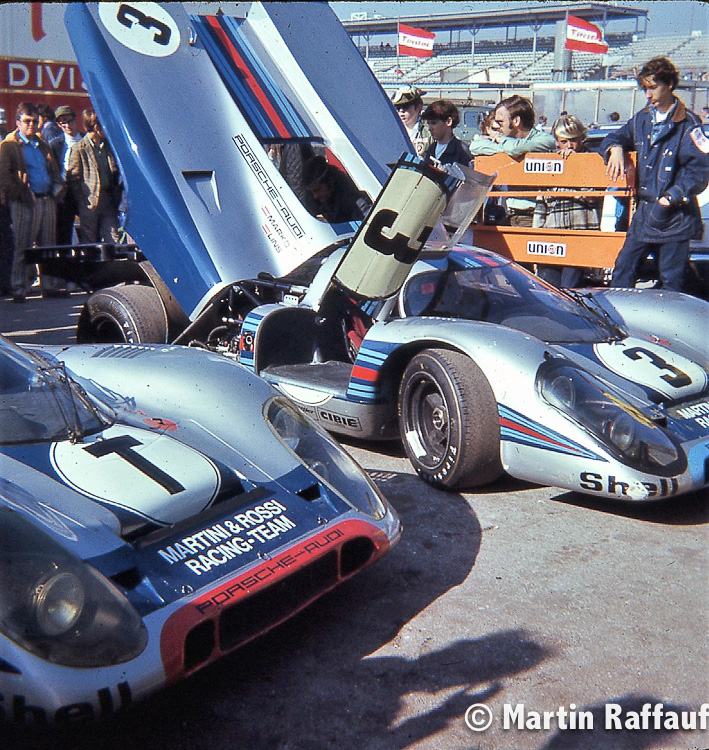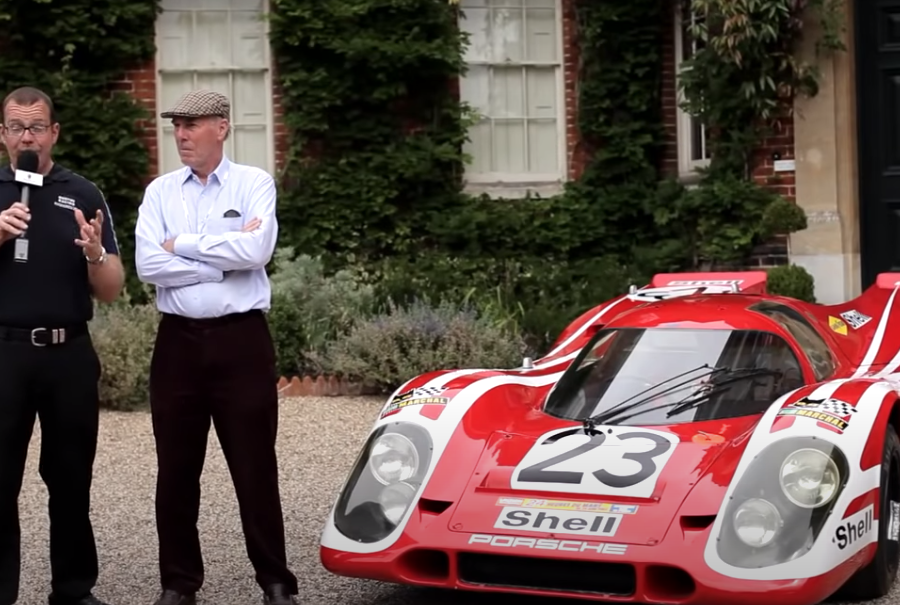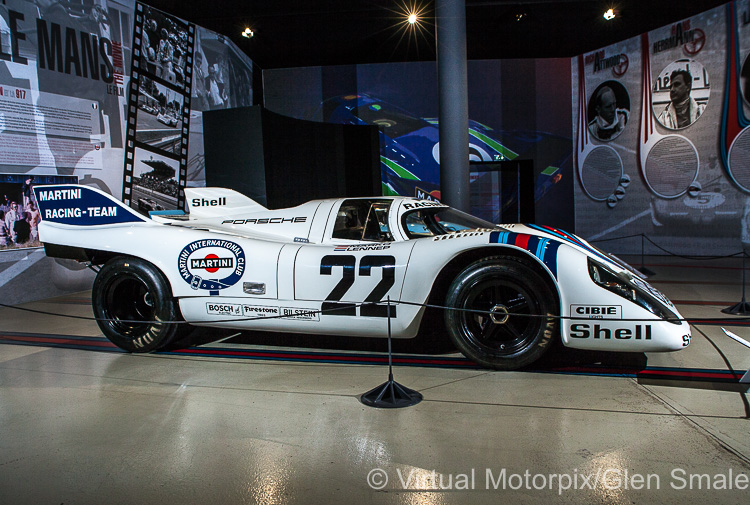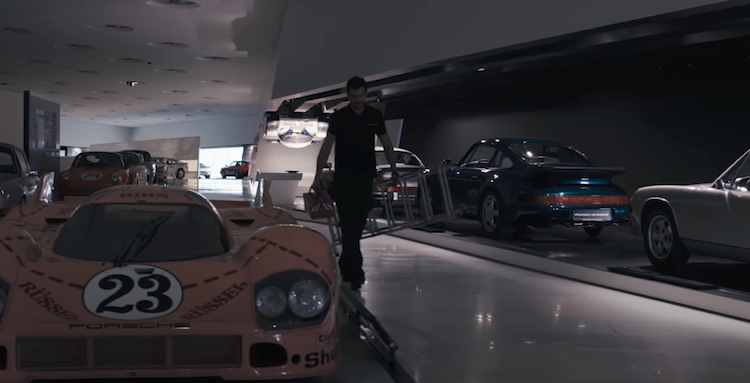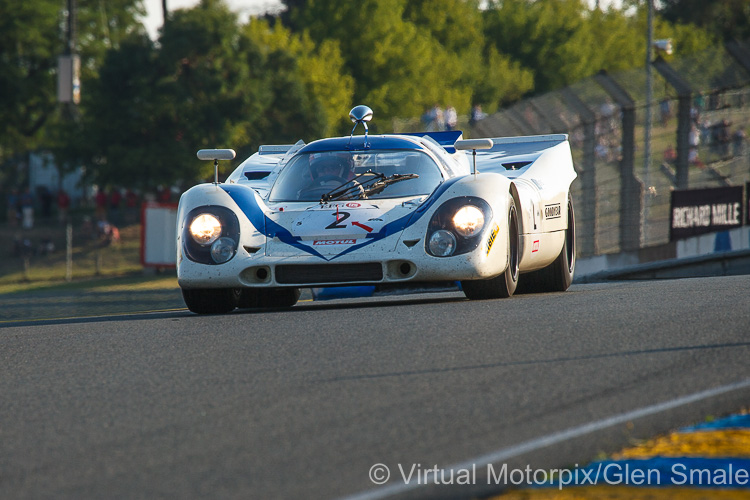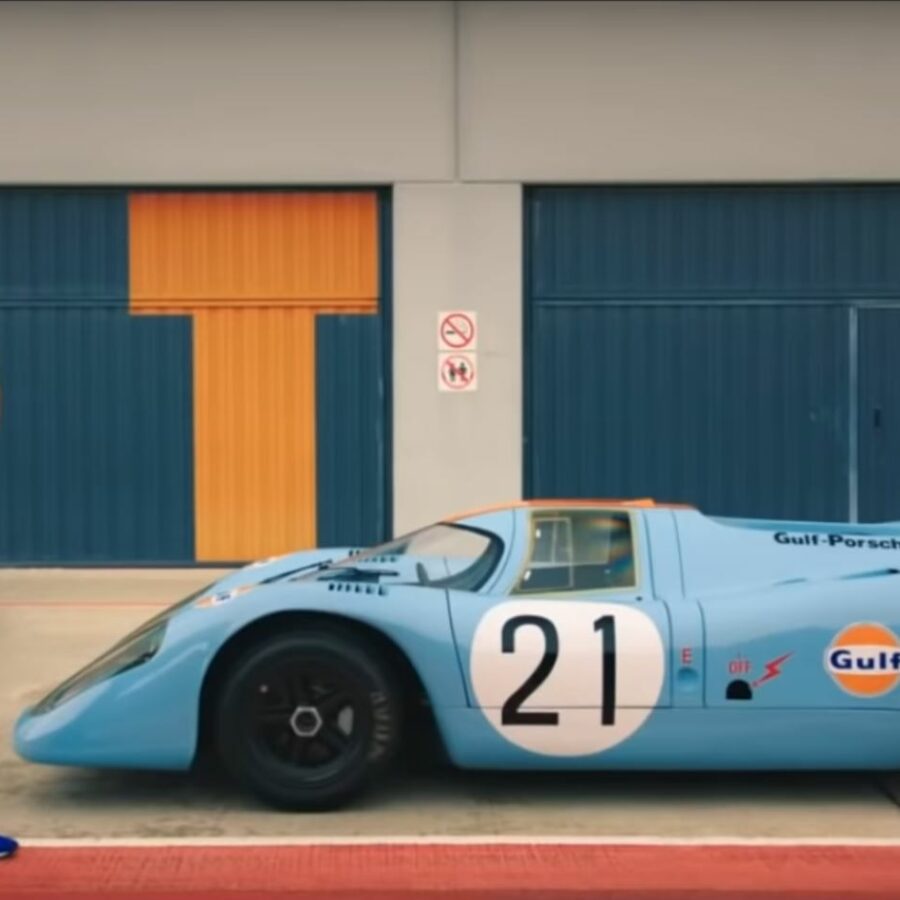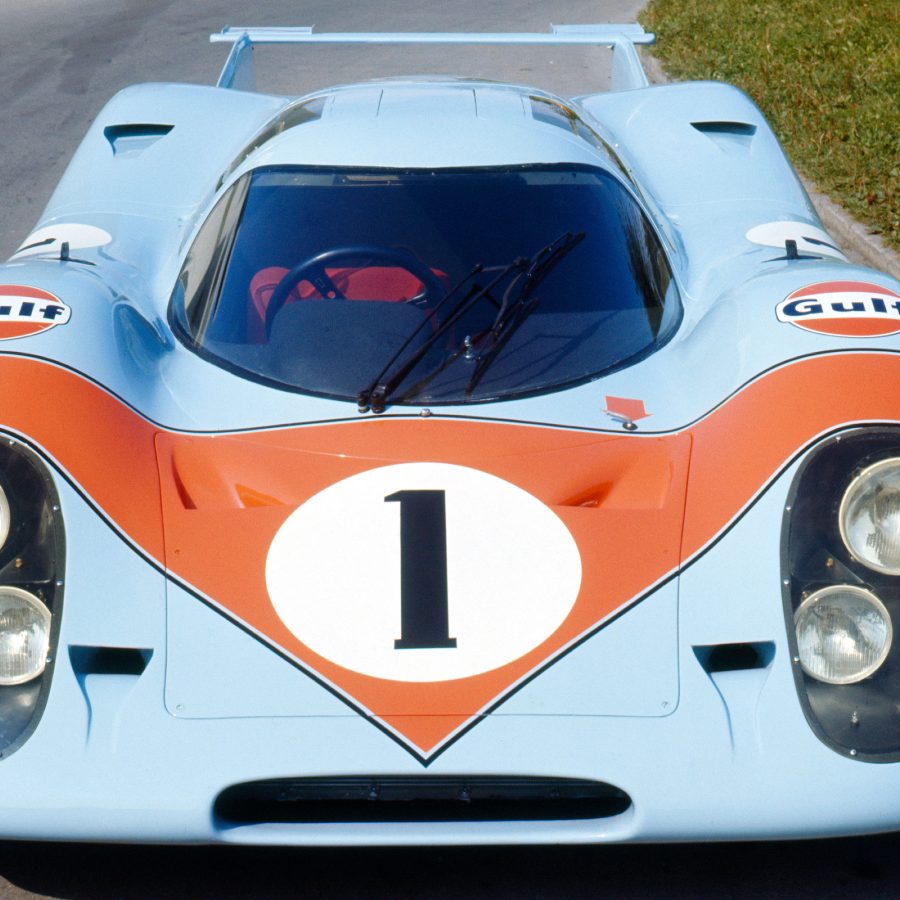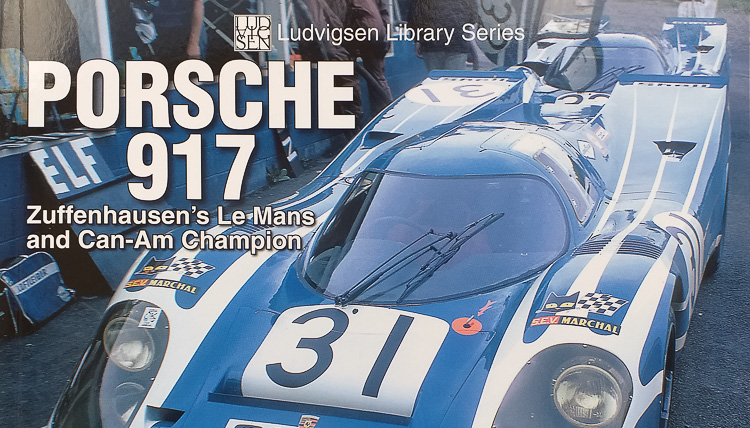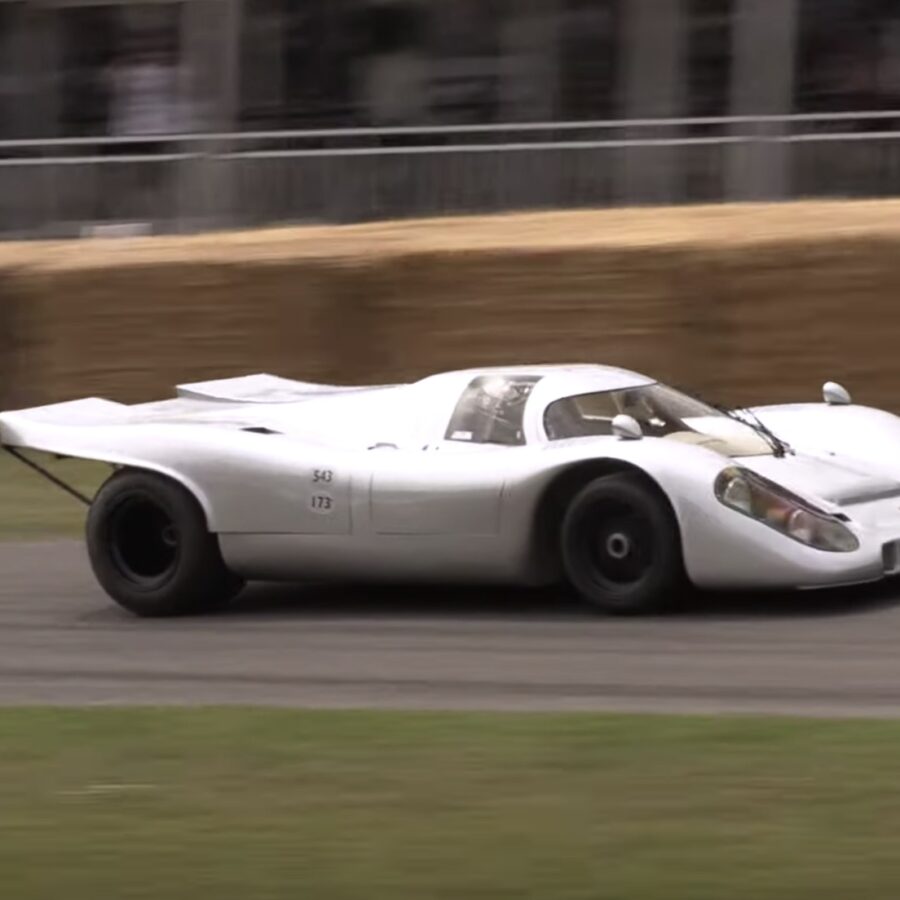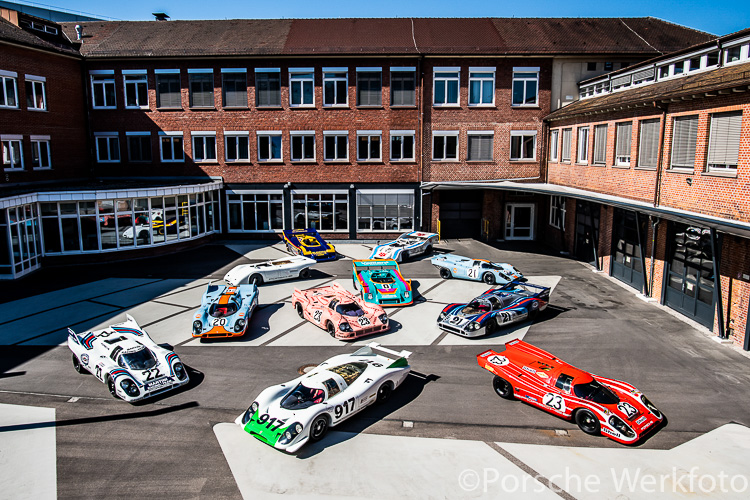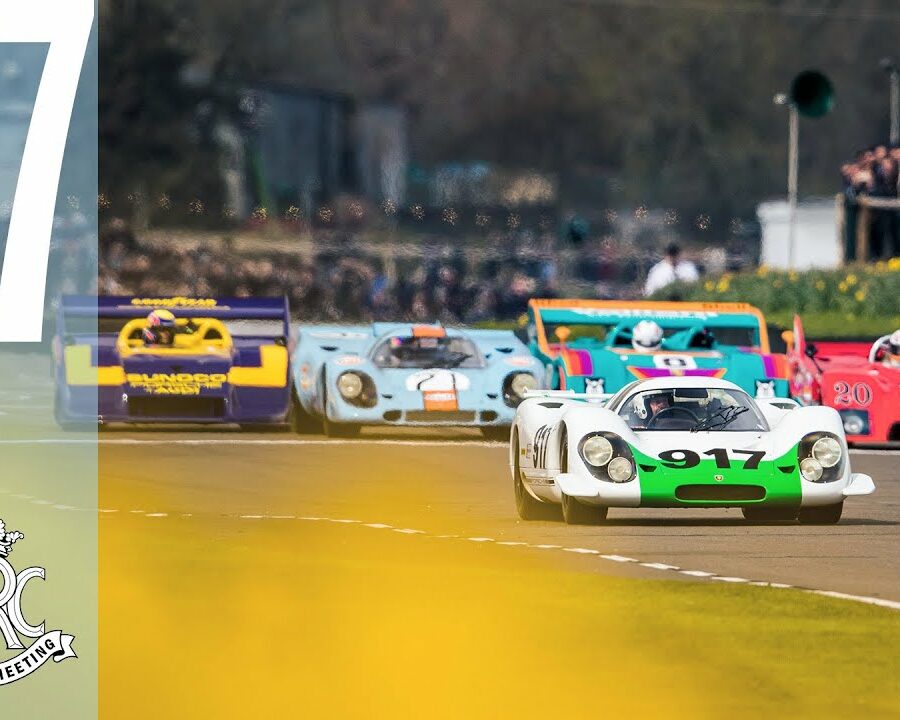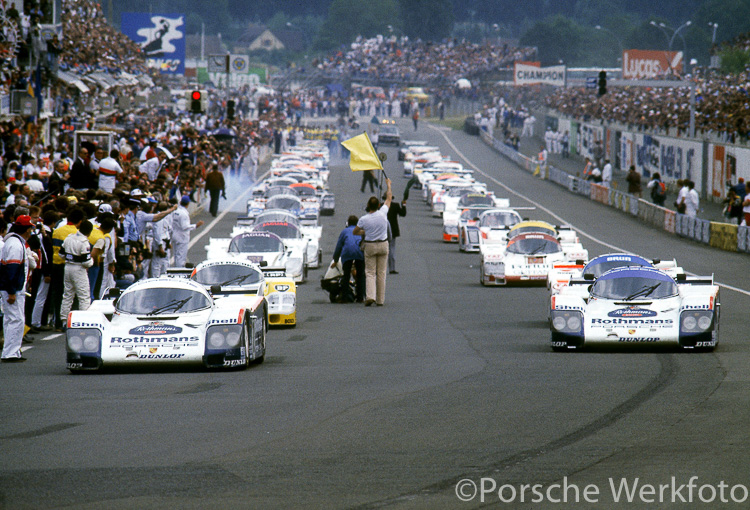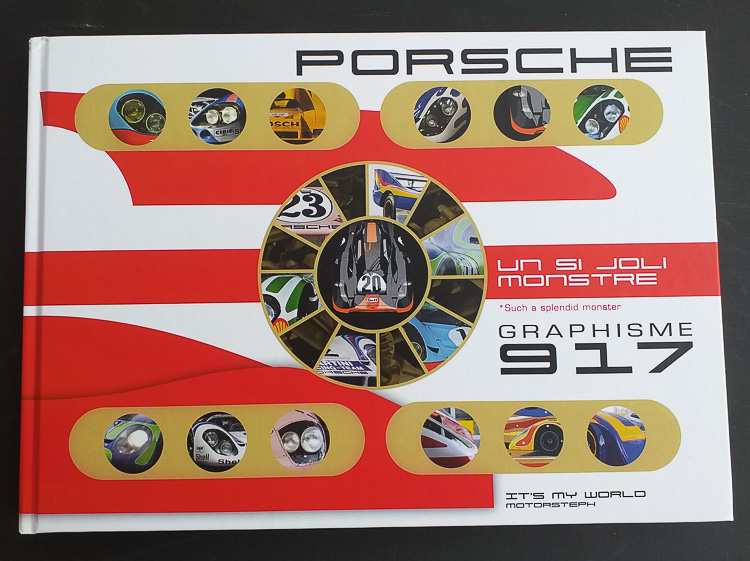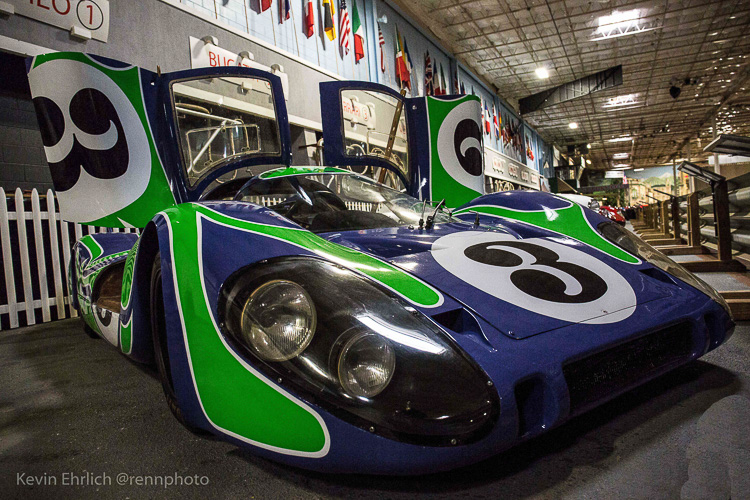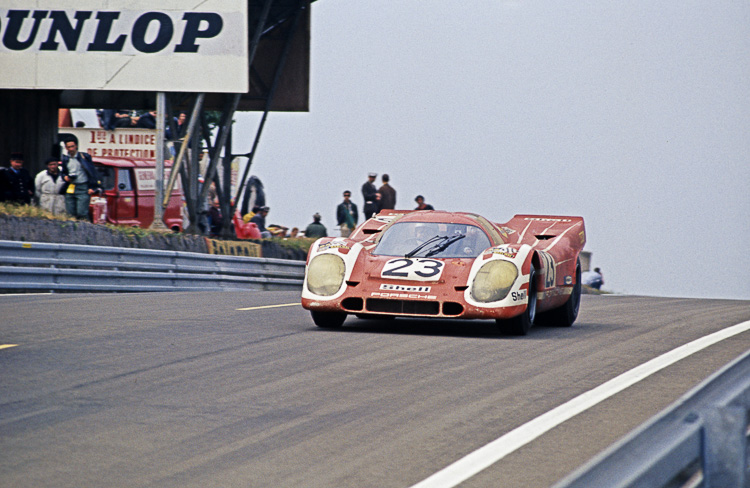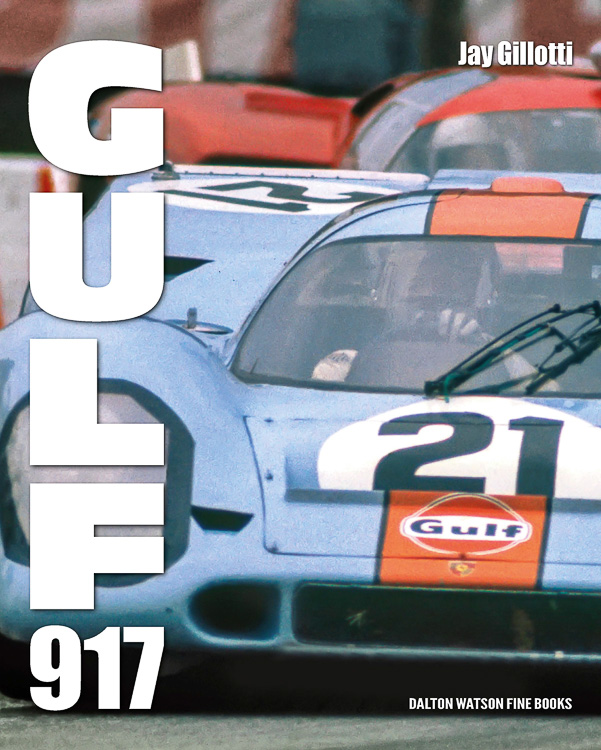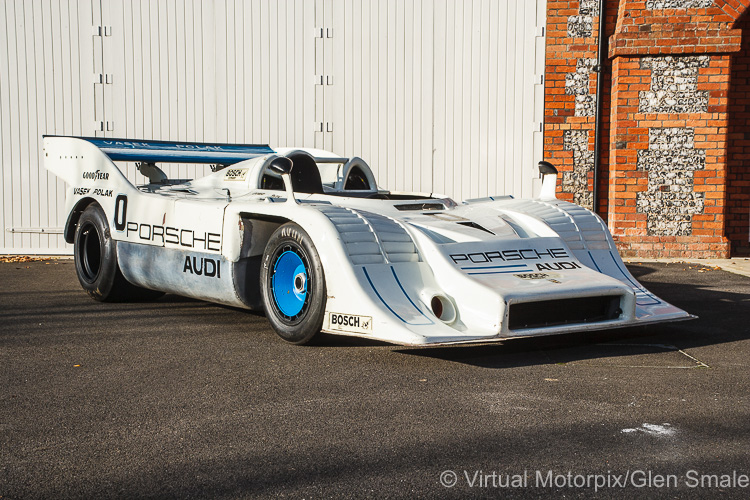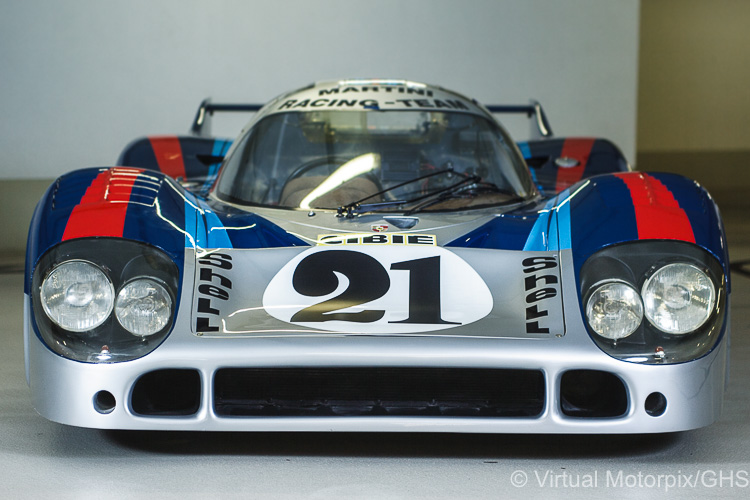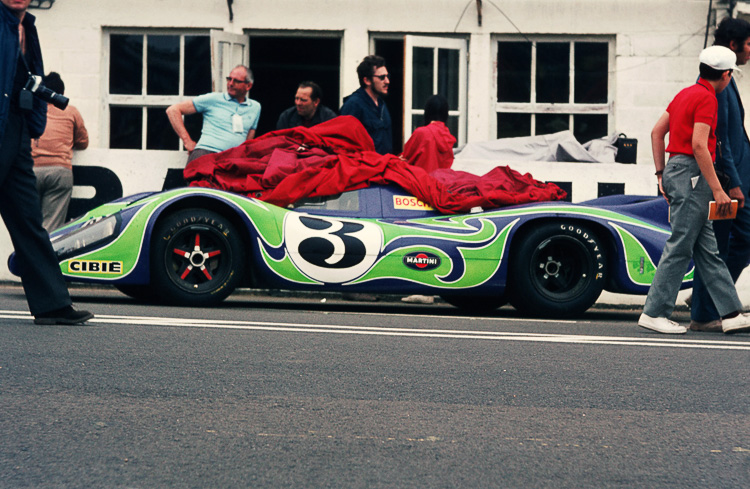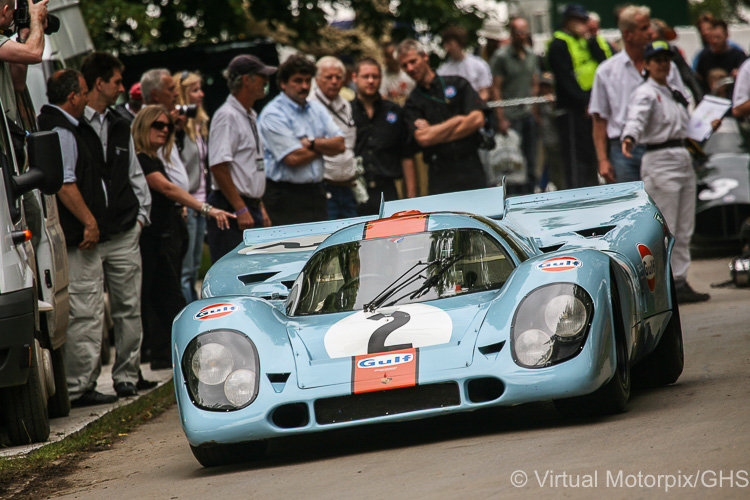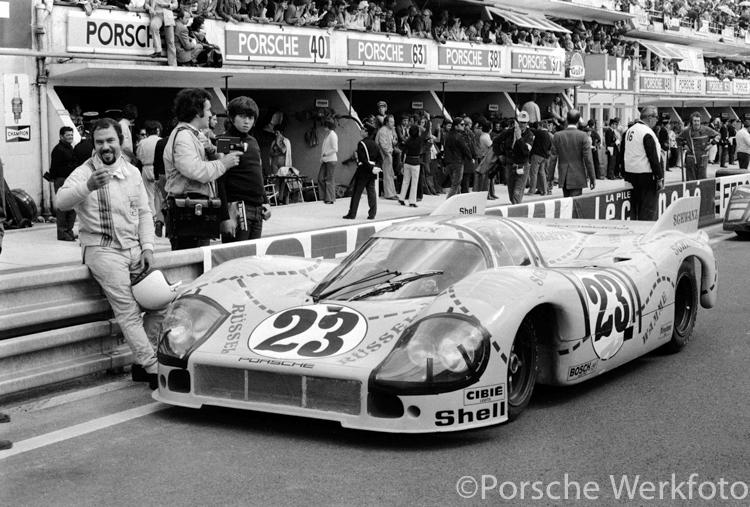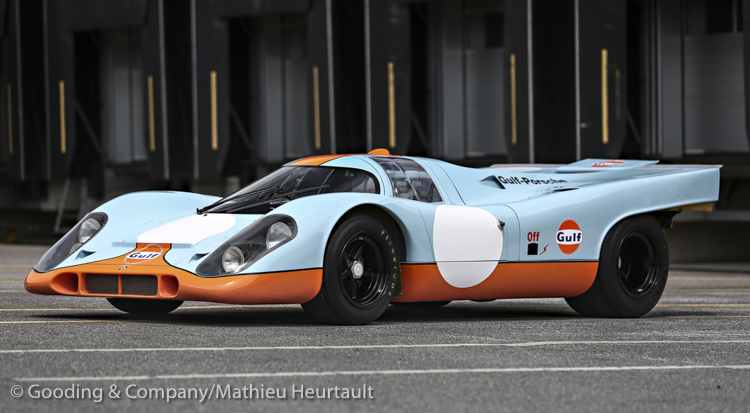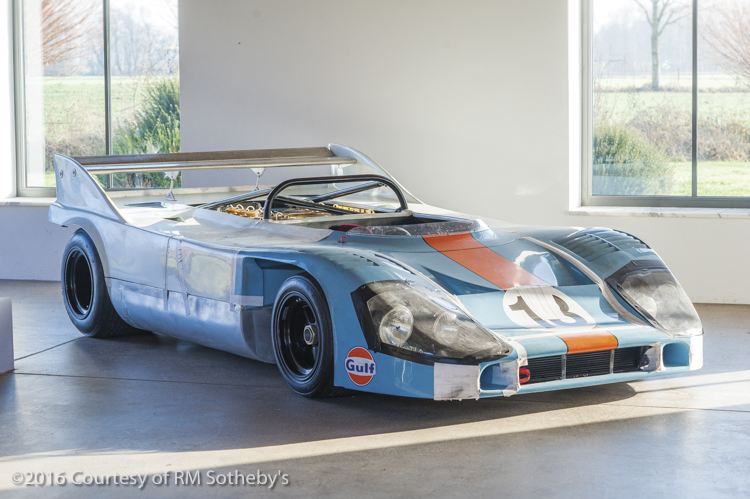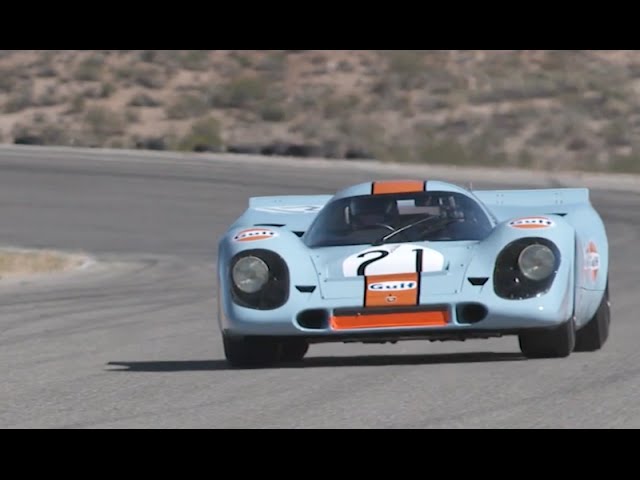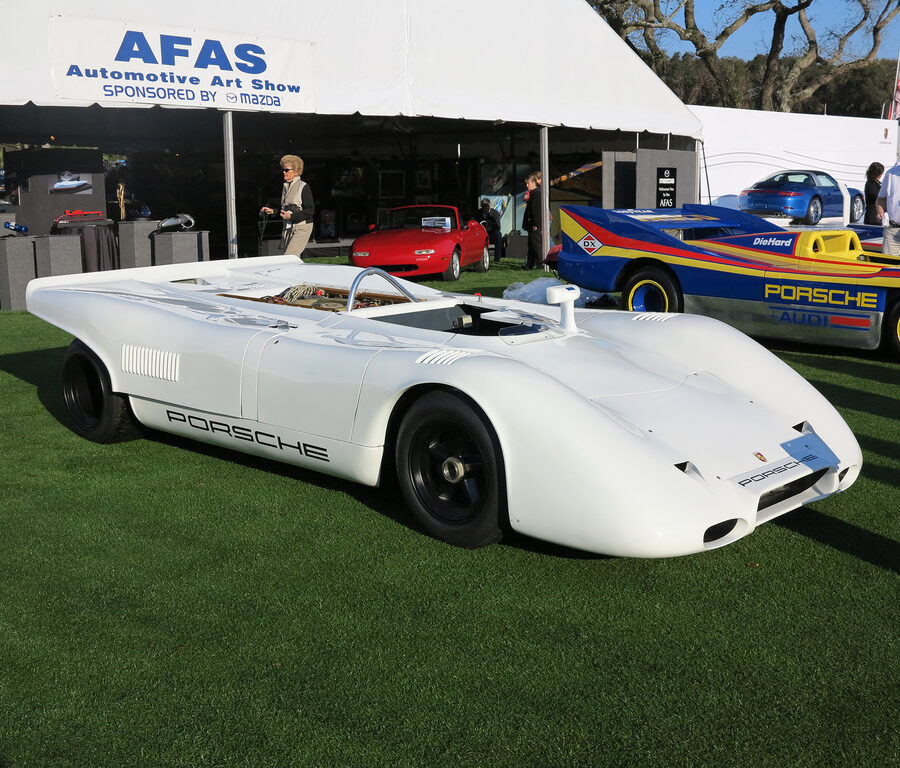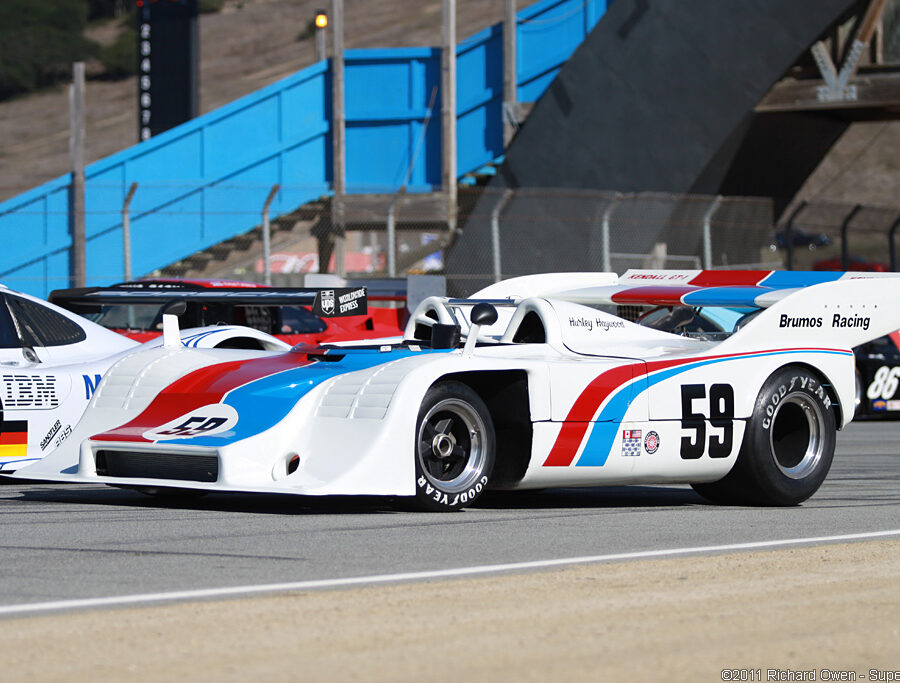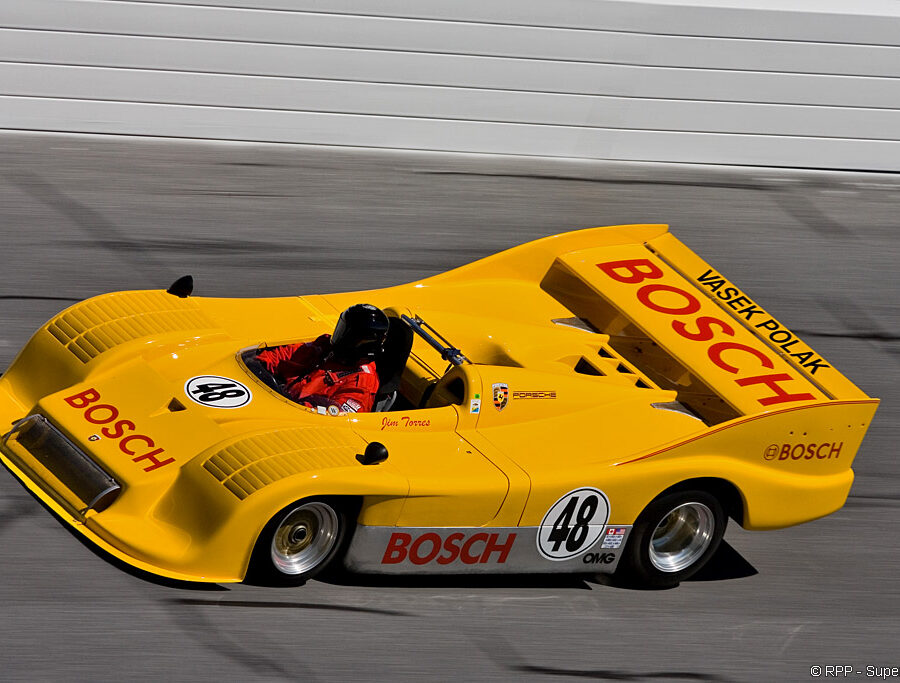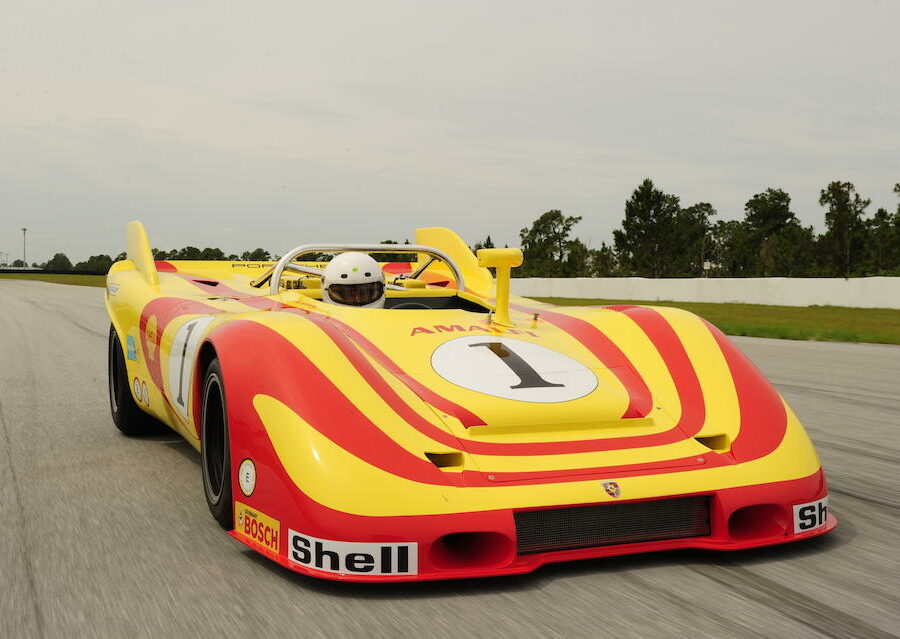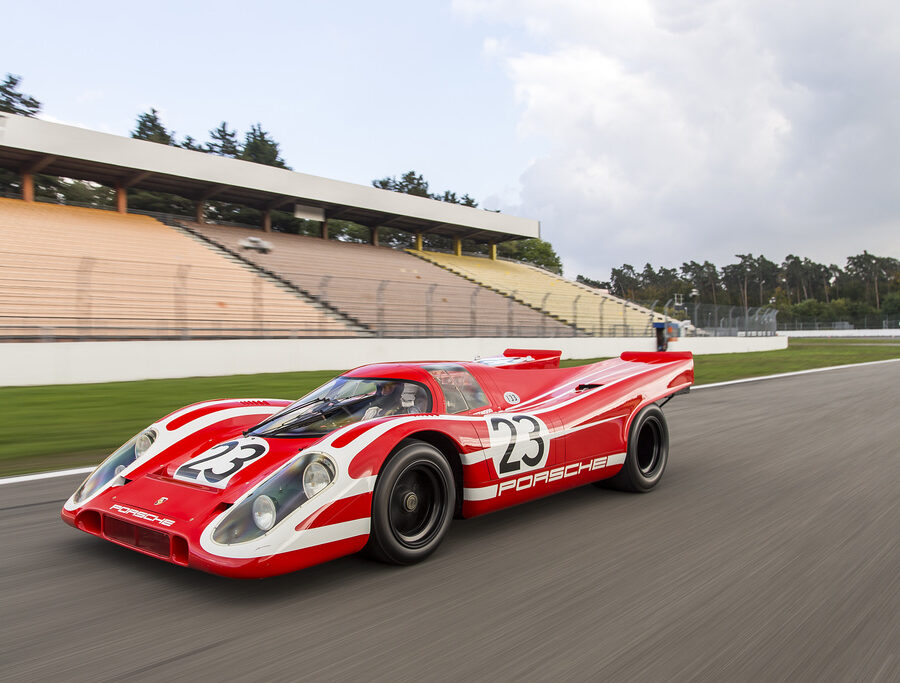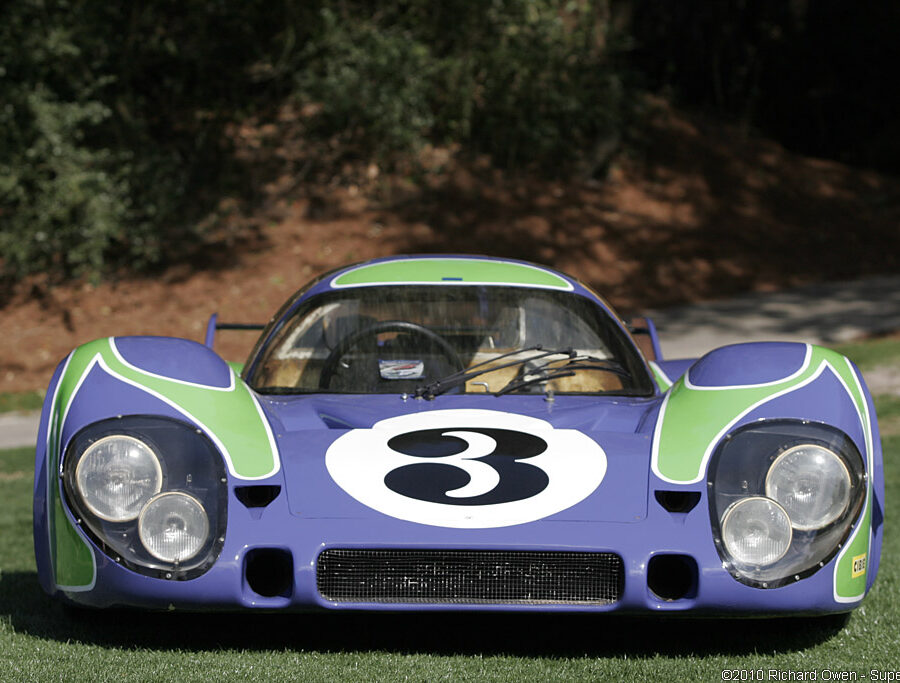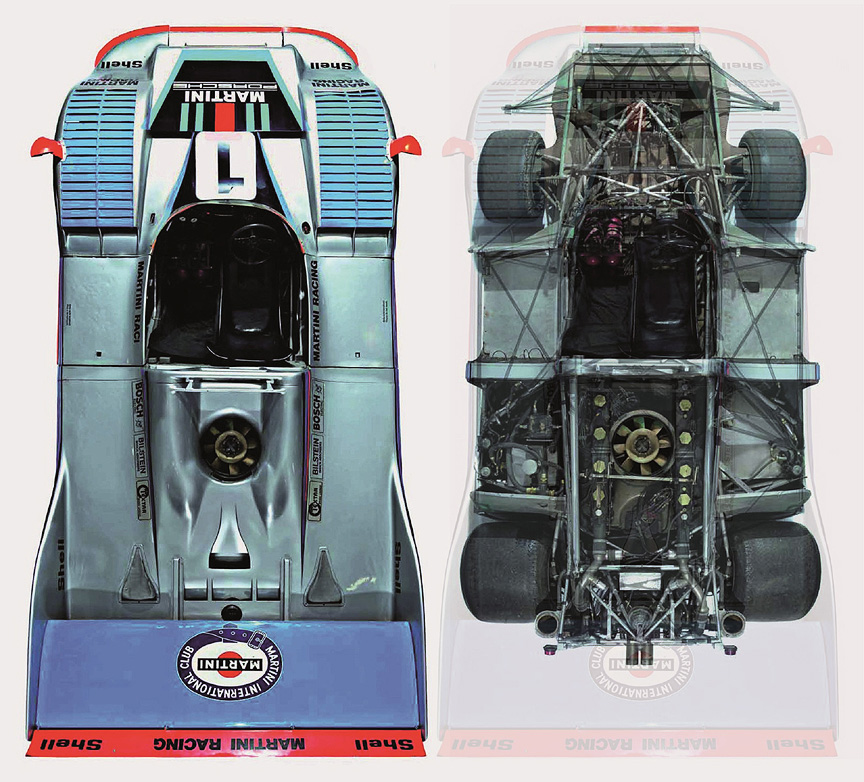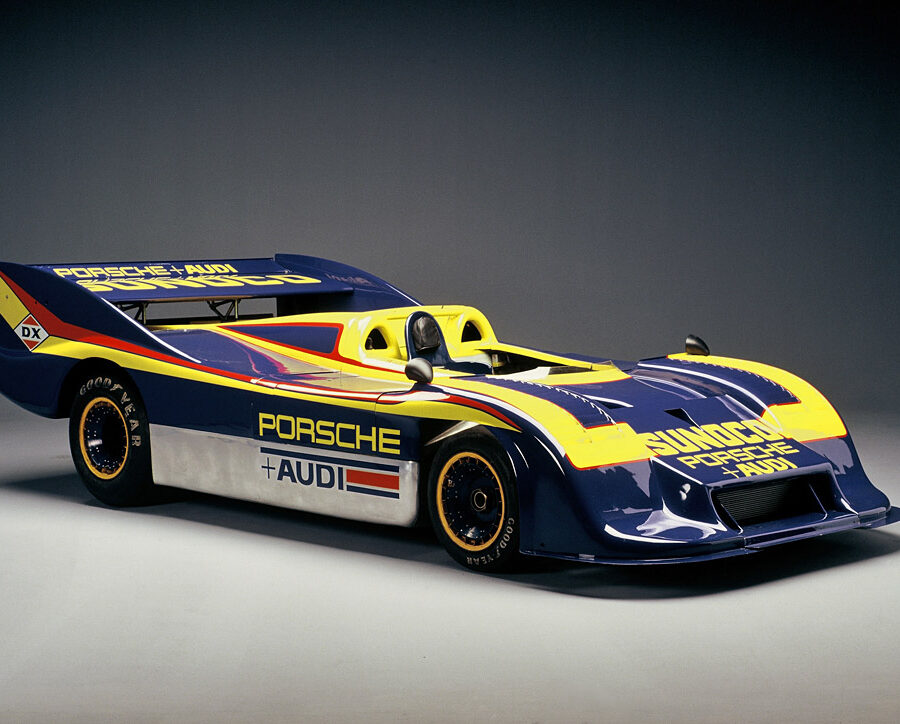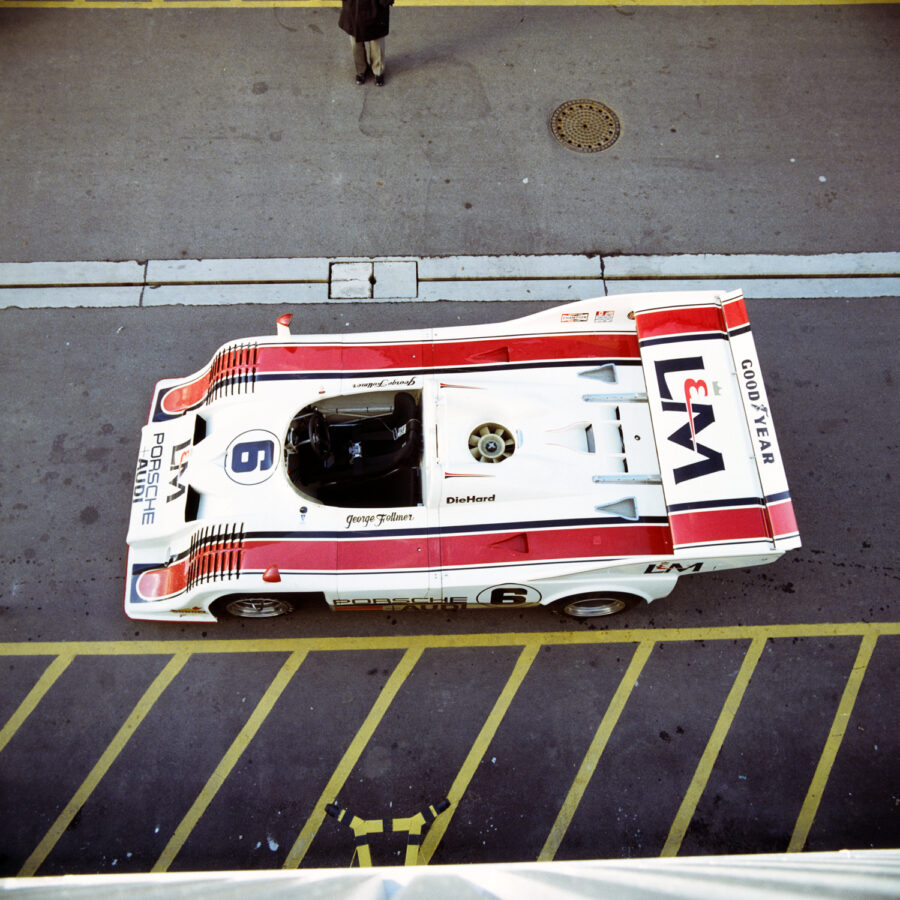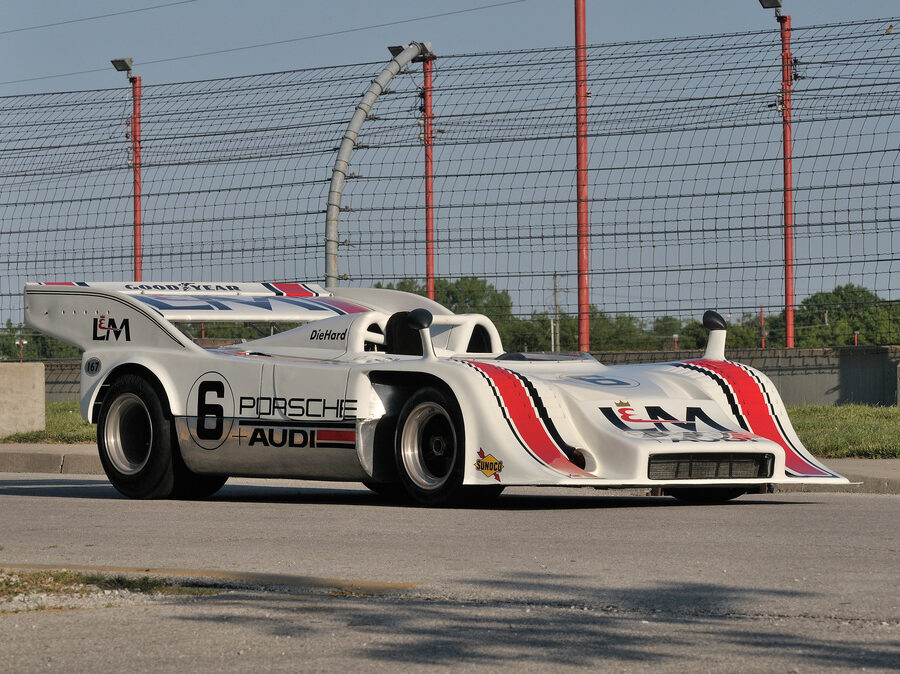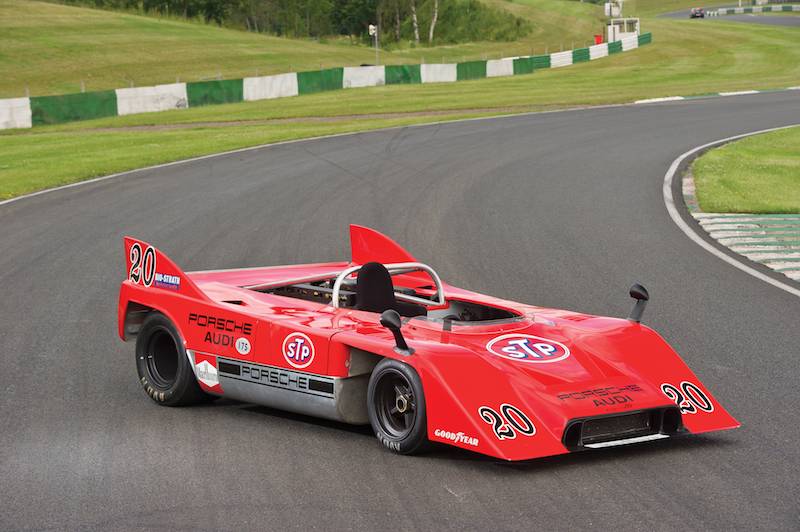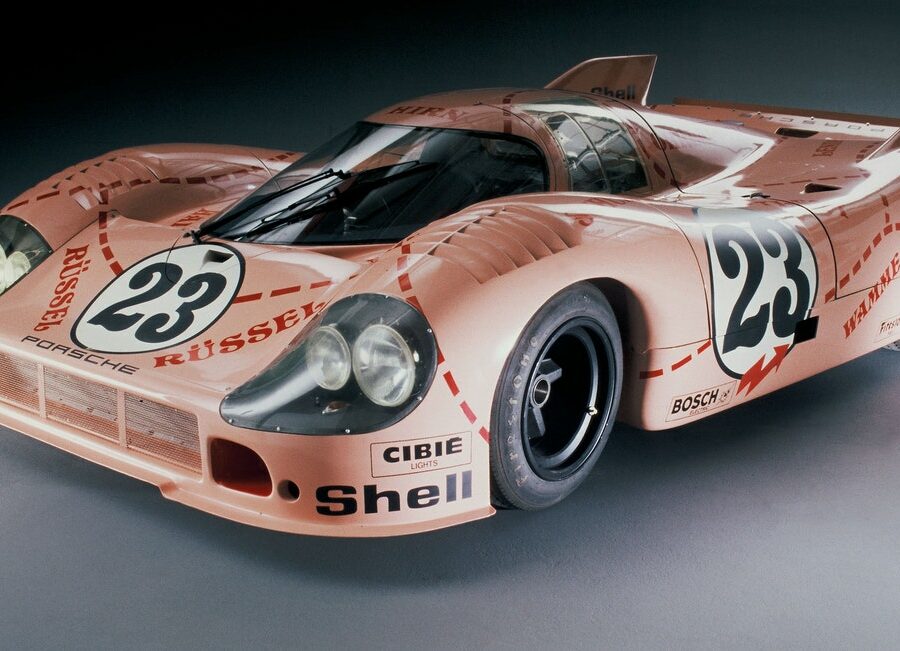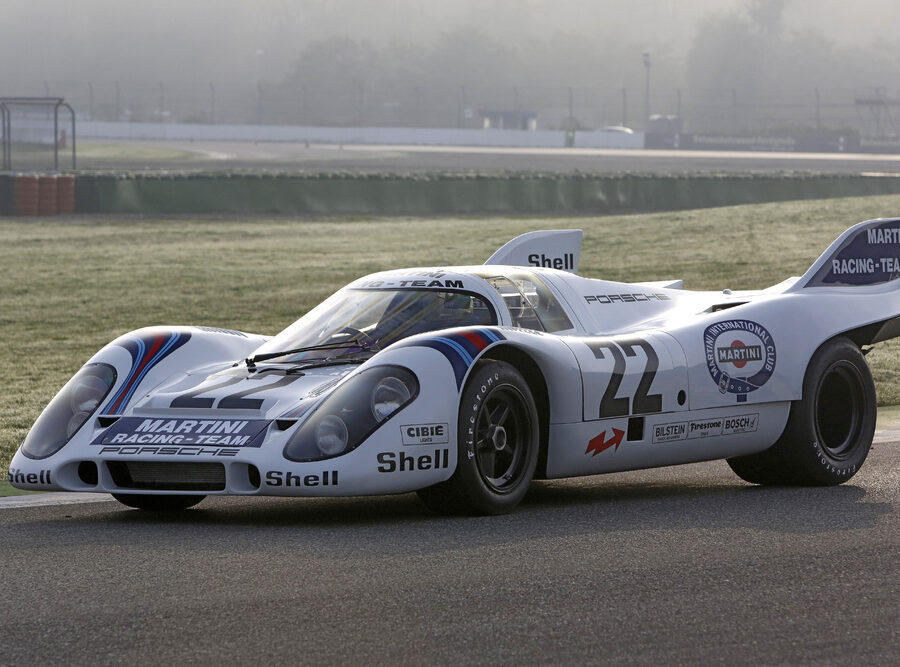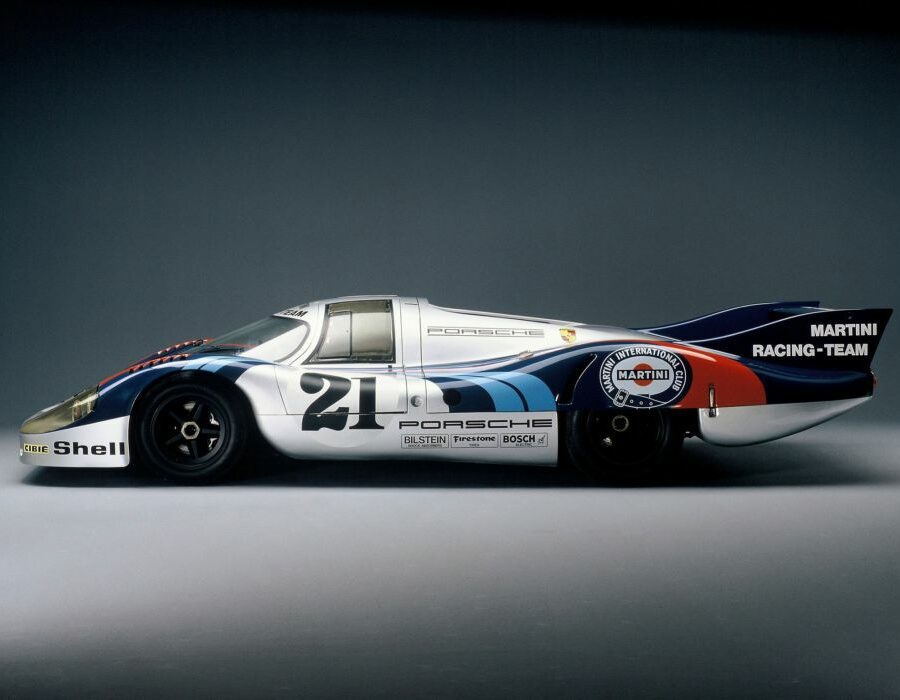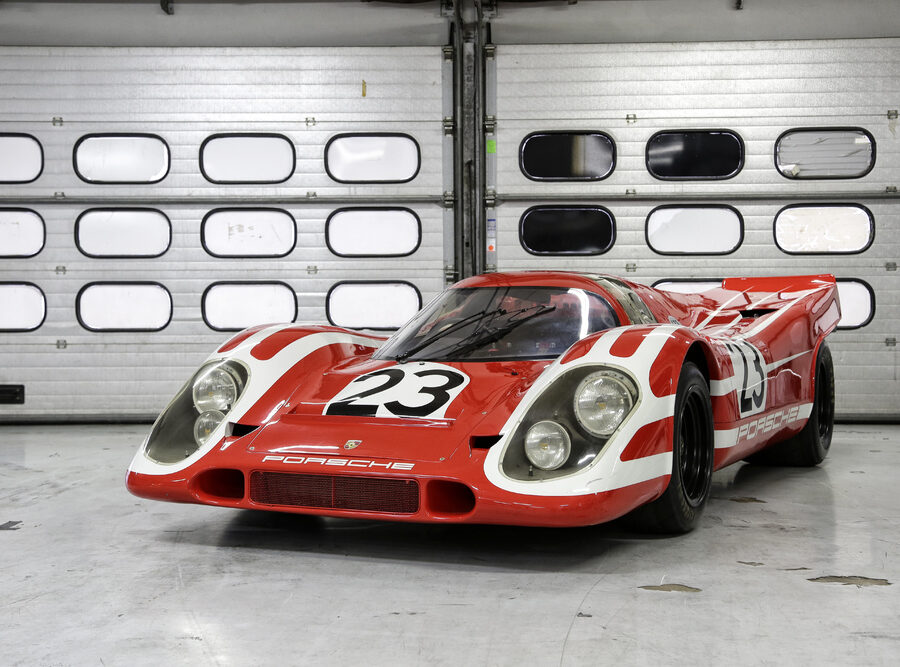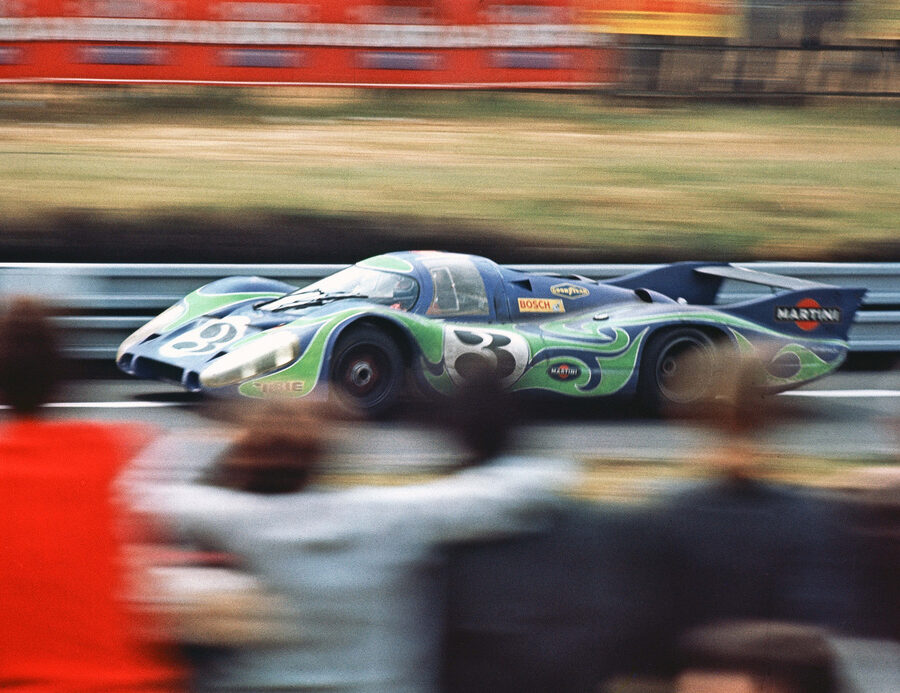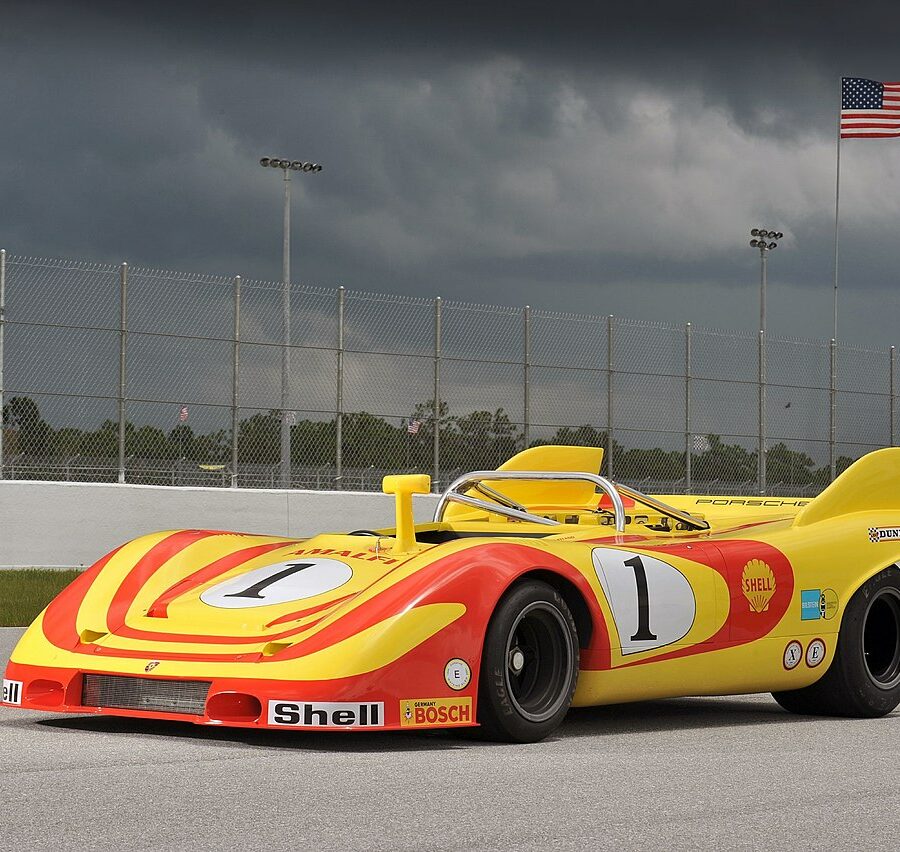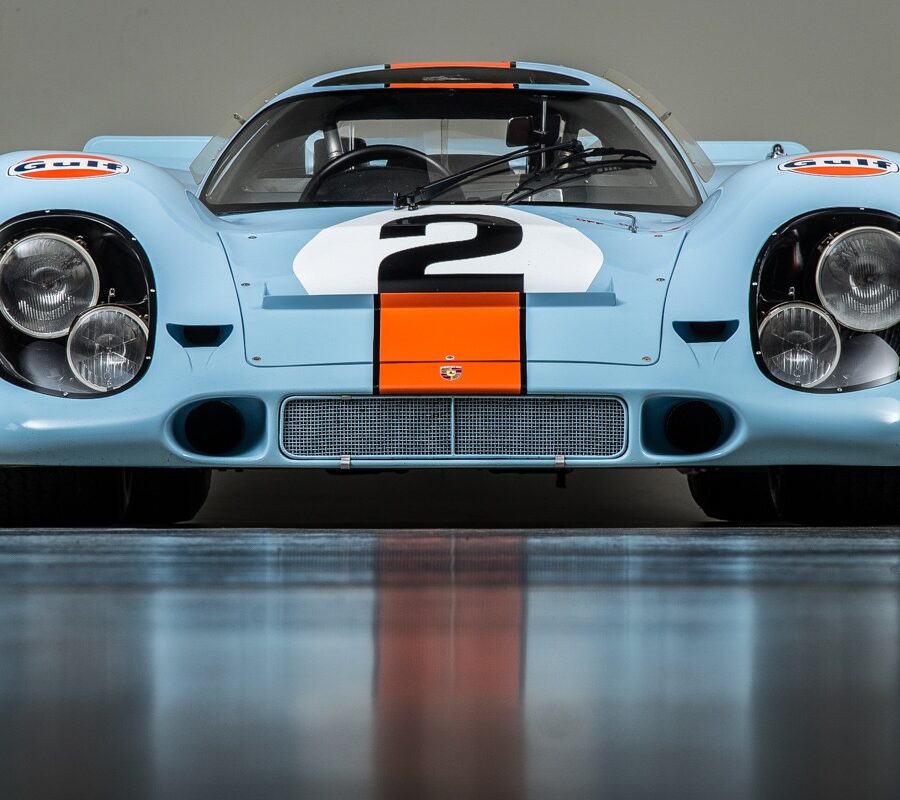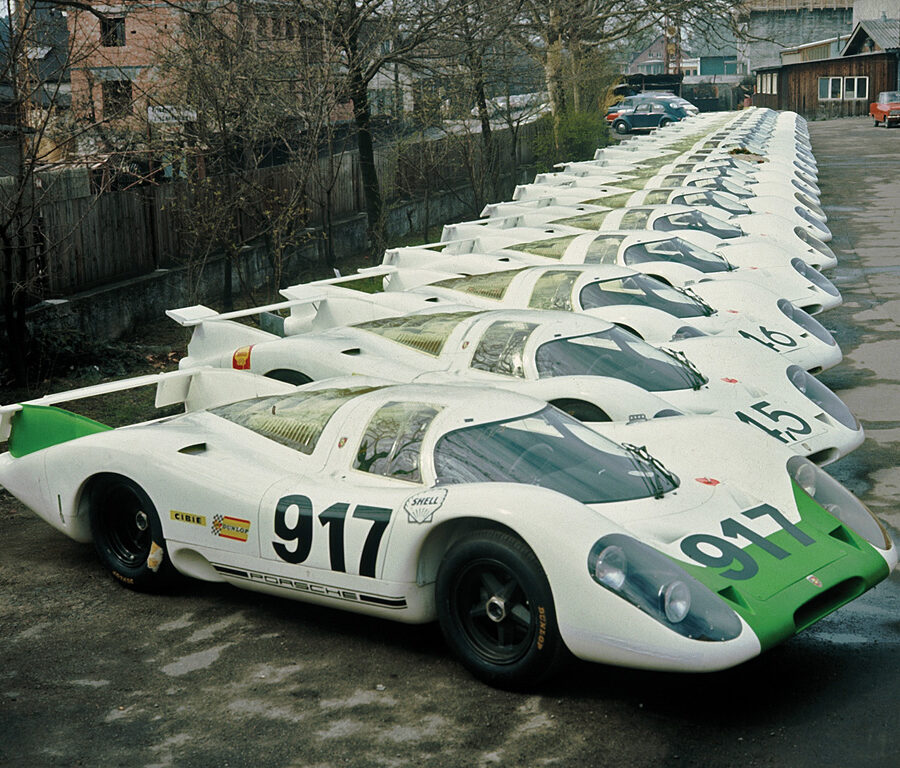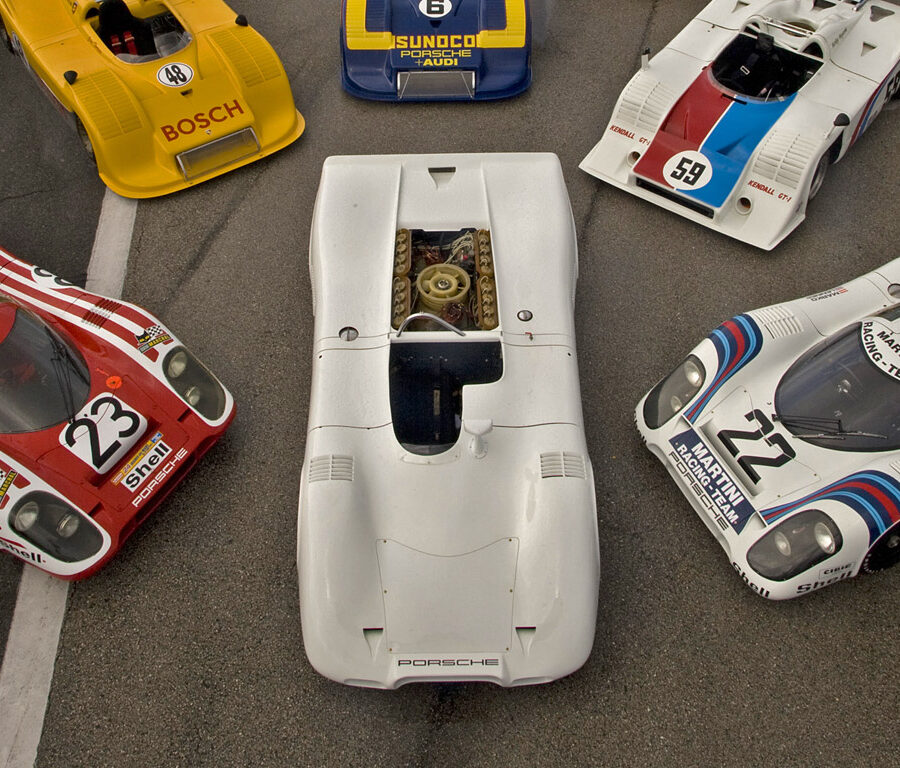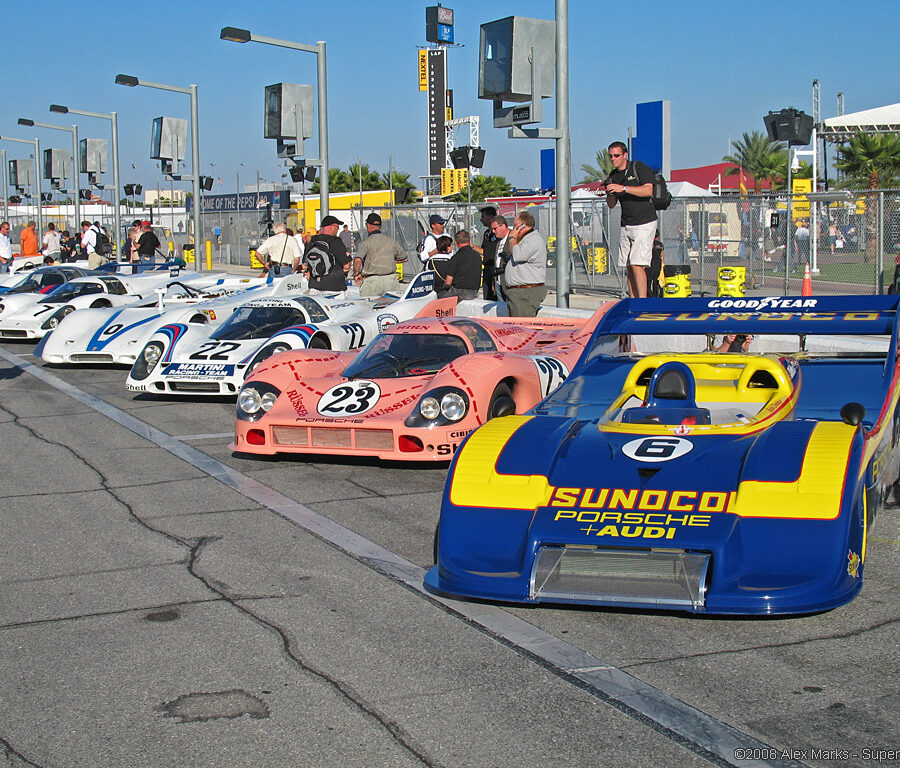Porsche 917
Porsche 908, 909 and 917 racing cars were the brainchilds of engineering genius Ferdinand Piëch, the grandchild of Ferdinand Porsche and nephew of Ferry Porsche. The 917 was the only Porsche model produced with the 12-cylinder engine and experimentally even with the 16-cylinder. When the new rules for the International Championship for Sports Cars were made public at the end of 1967, the team in Stuttgart-Zuffenhausen decided to build a new race car for the under-five-liter class. As the successor to the successful 907 and 908 types, the 917 got an air-cooled twelve-cylinder engine. Powered by the Type 912 flat-12 engine of 4.5, 4.9, or 5 litres, the 917/30 Can-Am variant was capable of a 0-62 mph (100 km/h) time of 2.3 seconds, 0–124 mph (200 km/h) in 5.3 seconds. The long tail Langheck version had a maximum measured top speed of 362 km/h (225 mph). It was dominant, scary and probably the most insane racecar ever built. See all our Porsche 917 Research.
Porsche 917 – Sales Brochures
Sales Catalogs for the Porsche 917
FOR SALE: 1969 Porsche 917K to be auctioned
Steve McQueen’s “Le Mans” Chassis No. 917-022
Luftgekühlt 10 to showcase Martini 917K
Unrestored 1971 Porsche 917 to take center stage
The Competitors That Tried To Outdo the Porsche 917
The Porsche 917 was a fearsome force in Motorsport
Porsche salutes Jo Siffert
Bespoke 911 GT3 RS honors first 917 victory
World’s most famous 917?
Winning Porsche in Steve McQueen’s film Le Mans trades hands
FOR SALE: Porsche 917K with unique history
Racing milestone comes to market
FOR SALE: 1969 Porsche 917 longtail
Early 917 challenges combined with a tragic ending
VIDEO: Racing with Giants video celebrates Porsche at Le Mans
Released as part of Le Mans 24's 100th anniversary
Redman Reunites with the Gulf 917
At a recent PCA tech event Brian Redman took a trip down memory lane, complete with one of the Gulf 917s that played such a major role in his career
Porsche 917/30 – Specifications & Performance
Technical Specifications
Porsche 917/10-72 – Specifications & Performance
Technical Specifications
Porsche 917 LH-71 – Specifications & Performance
Technical Specifications
Porsche 917 LH-70 – Specifications & Performance
Technical Specifications
Porsche 917 K-71 – Specifications & Performance
Technical Specifications
Porsche 917 K-70 – Specifications & Performance
Technical Specifications
Porsche 917 ‘Interserie Spyder’ – Specifications & Performance
Technical Specifications
Porsche celebrates “50 years of the 917”
One of the strongest number sequences ever produced by Stuttgart-Zuffenhausen is celebrating its 50th anniversary this year: the Porsche 917.
Porsche 917/20 Turbo (1973 – 1974)
The 917/20 Turbo is a confusing car - its chassis number reads 917/30-001, but it is not the real 917/30
Porsche 917/30 Spyder (1972 – 1973)
The Car That Killed Can-Am
Porsche 917/10 Turbo (1972)
The first turbo-Porsche, Can-Am winner 1972, Interserie winner 1972, 1973
Porsche 917/10-72 (1972)
The 1972 917/10 was similar to the 908/03, but had the 12-cylinder engine instead of the 3-litre flat-8.
Porsche 917/10-71 (1971)
Only two 917/10 were created in 1971.
Porsche 917/20 Le Mans (1971)
The Pink Pig
Porsche 917 K-71 (1971)
For the 1971 Season, the 917 Kurzheck Coupé (917K) was upgraded in several ways
Porsche 917 LH-71 (1971)
Like the 917 LH of 1969 and 1970, the 1971 version was also made for one race only - the 24 hours of Le Mans.
Porsche 917 K-70 (1970)
The 917 Kurzheck Coupé (917K) first appeared in 1970. A winner from day one.
Porsche 917 ‘Interserie Spyder’ (1969 – 1970)
Of all the 917 variants, the ‘Interserie Spyder’ was one of the most successful. It won the Interserie championship outright for two years in a row before the model was replaced by the 917/10 of 1972
Porsche 917 K-69 (1969)
The short tail 917 K ("Kurz" in German for short) was raced first. The only engine available in 1969 was the 4.5-litre flat 12.
Porsche 917 LH-69 (1969)
For the 1969 racing season the absolutely new Porsche 917 with 4.5-litre 12-cylinder engine was created.



